Matera - attractions, sightseeing, map, hotels, restaurants, accommodation, parking lots. Guide
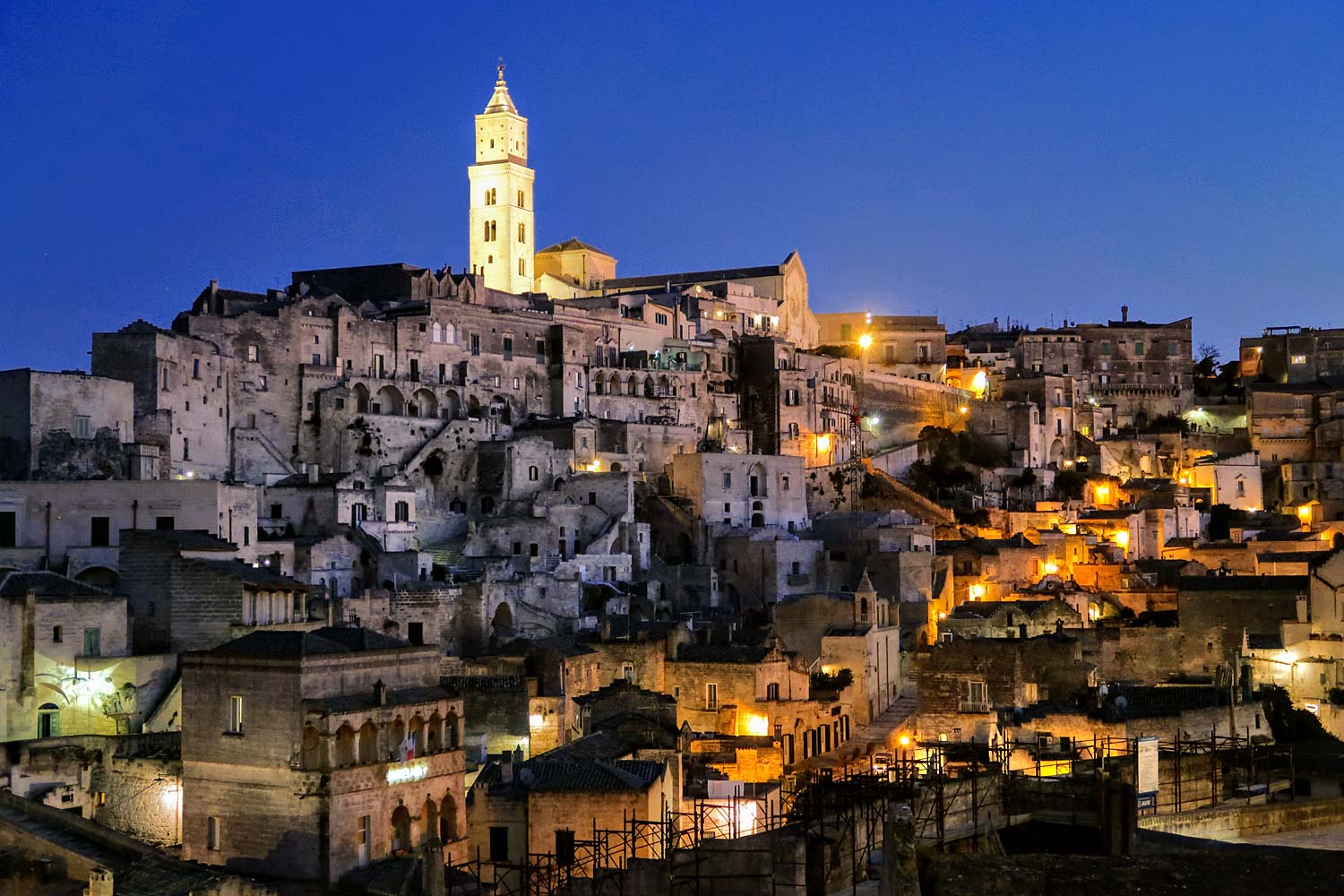
Matera is without a doubt one of the most moving places you will ever see. This is one of two the oldest on earth (!!!), continuously inhabited human settlements, but ... Matera was forgotten by man and God.
When (in the middle of the 90th century) universities around the world were phasing out the first generations of computers, replacing them with better and faster models; when the work on the conquest of space was in full swing, in Matera, people still lived in ... caves. They didn't have electricity and water. Every second child died in childbirth, and XNUMX% of the population was illiterate.
It was the only place on earth where the inhabitants could say that they still live in the same houses where their ancestors lived 9 years ago.
Matera still radiates some primal energy, and it infects the tourists visiting the city. Even without knowing the history, you just know that you are in a unique and extraordinary place. However, it is worth reading further. I guarantee that when the facts below come into contact with reality, the goosebumps are certain when visiting Matera.
How was Matera created?
Man has been living here since 7000 BC (Paleolithic). Only Petra in Jordan has a longer history.
The settlement was established in soft rocks located above the gorge of the stream Gravina. Perhaps these two circumstances were crucial: the proximity to the water and the softness of the rocks. Primitive tools were enough to forge a cave in the soft rock, in which it was safe to live.
Sasso Caveoso
The first caves were formed in the upper part of the hill, and the next ones were carved lower and lower. In this way, subsequent houses grew into the previous ones, fused with them. Stairs leading to successive, lower houses often lead up the roofs and facades of other buildings. When you look at the city from a distance, you immediately think that it looks like a termite nest. This is how the first, oldest part of the city was created: Sasso Caveoso.
Sasso Barisano
With time, there was not enough space for other houses, because at a certain height the rocks become hard. Primitive tools prevented further houses from being excavated further down the slope. Therefore, on the other side of the hill, in the neighboring valley, more caves began to be dug. And again, from the top of the hill to the bottom, more houses were built. This is how a slightly newer part of the stone city was created Sasso Barisano.
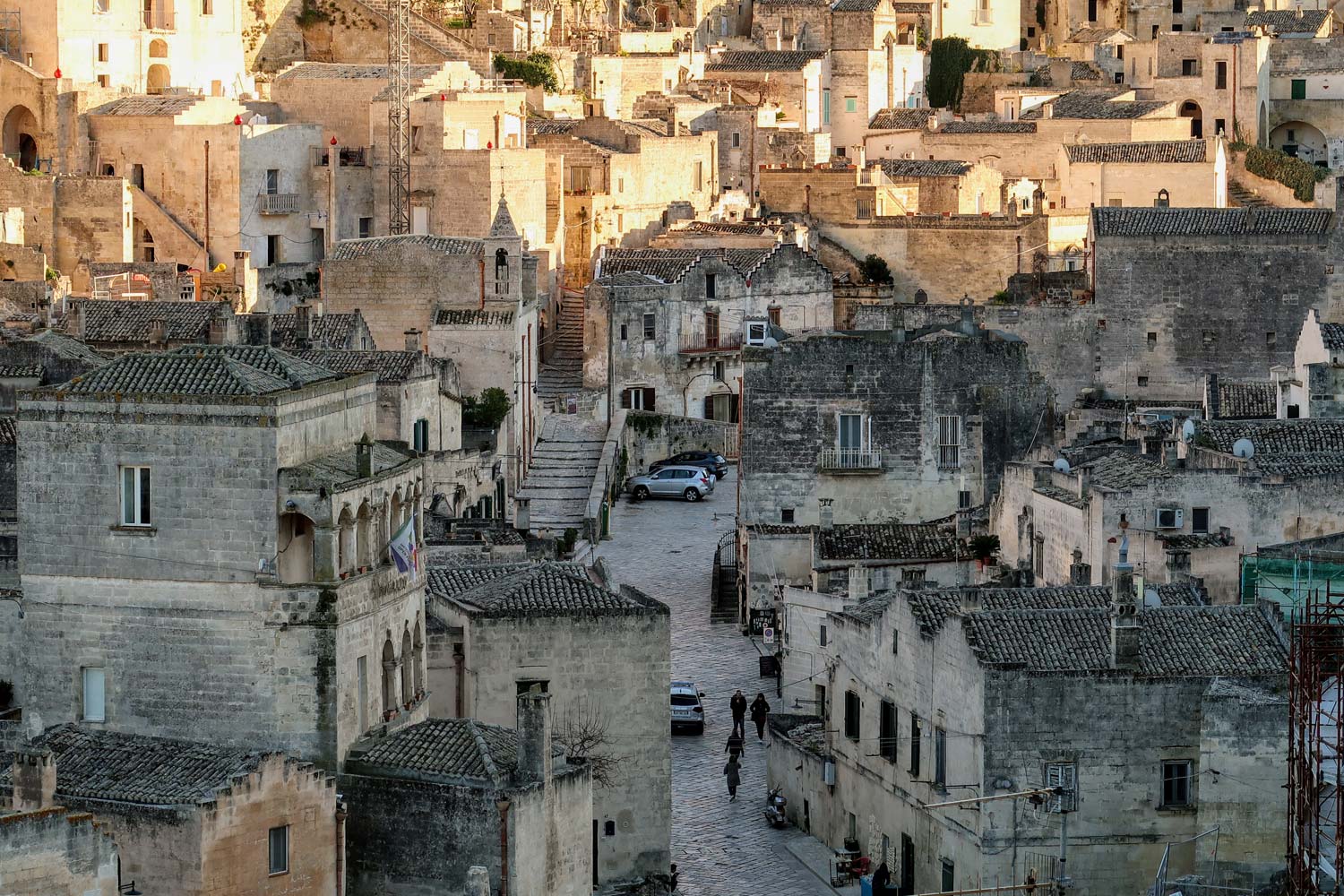
Due to the fact that the two stone parts of the city were built at different times, differences in the appearance of the houses can be noticed. Some of the houses in the older part (Sasso Caveoso) have only elevations, added at the mouth of a cavity carved in the rock. Some of them do not even have a facade, but only openings in the form of a cave entrance.
In the newer part (Sasso Barisano) there are many houses, where a regular, stone building is built at the mouth of the pit.
I have marked the location of both districts on the map of Matera below.
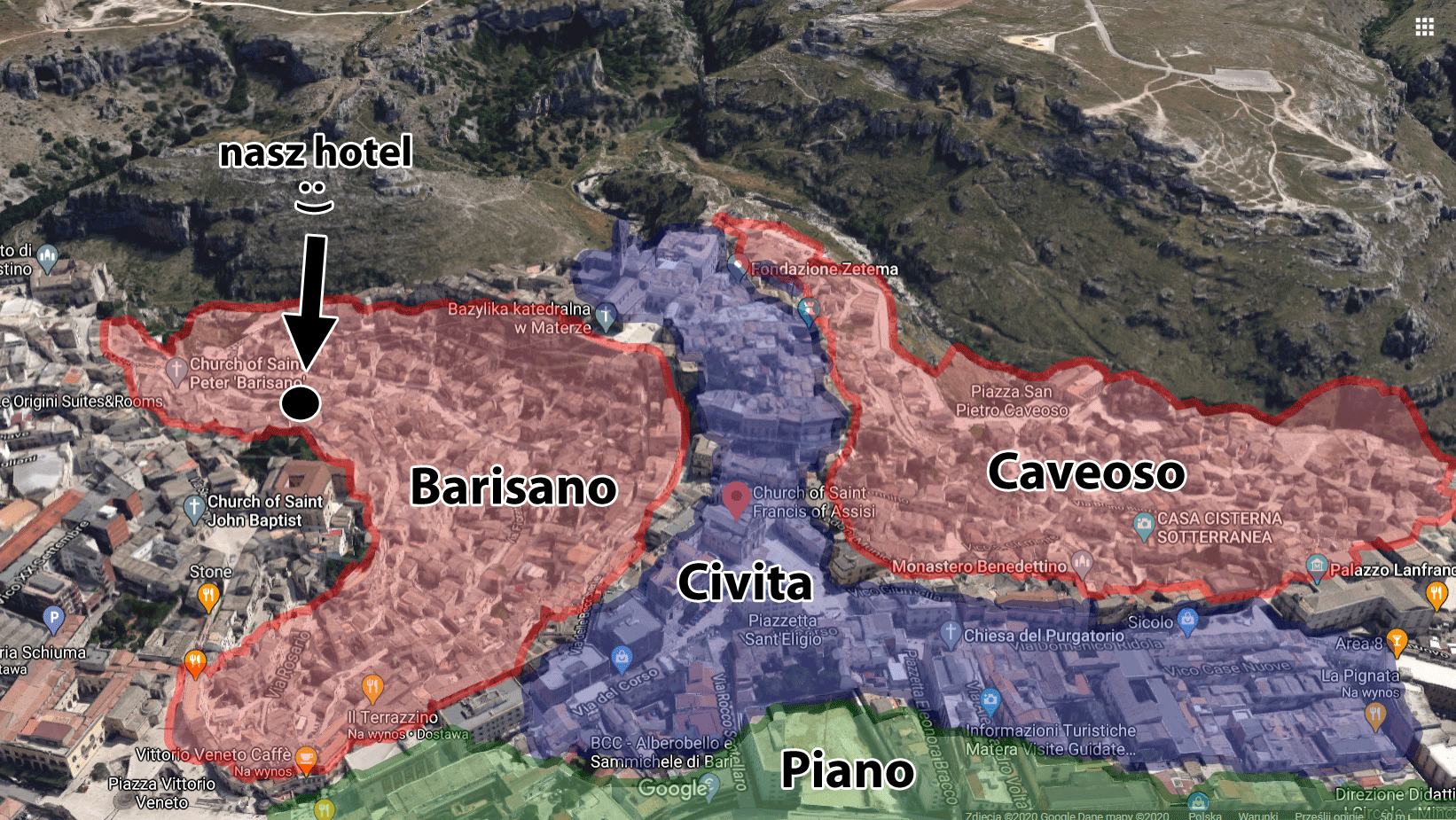
Civita
The third district - called Civita - was created on the top of a hill separating the two valleys in which there are: Sasso Caveoso and Sasso Barisano. The buildings in Civita are much newer and very impressive. Civita together with Sasso Caveoso and Sasso Barisano make up Sassi, which is the old town of Matera. The area of the old town is worth exploring in full.
Piano
Further west of Sassi there is a plateau and on it is a district Piano. The name of this district is obviously related to the flat shape of the area on which it is located. In this part of the city there are mostly little interesting, typical Italian, not very pretty new buildings.
The magnet attracting tourists to Matera is of course Sassibut before Sassi became a pride, it was a symbol of disgrace for many years ...
National disgrace
Life in southern Italy has always had a different rhythm. Far from the mainstream, the source of which was in northern Italy. The south has always been there, it has been poorer and has been beyond anyone's interest for centuries. The stereotype of the poor south of Italy persisted over the centuries and was reflected in reality. The poverty of the south became the standard and did not offend anyone. She didn't even interest anyone! In particular, it did not interest the Italian government.
In the end, the marginalization of the south took on such a dimension that with time the south even became a place of exile ...
During Mussolini's rule, the south of Italy was the destination where anti-fascist activists inconvenient for him were forcibly sent. One of the exiles was Carlo Levi, an Italian painter and writer, a trained doctor. During his forced exile, he had the opportunity to get to know the true picture of the poverty of the south, which he described 10 years later in the book "Christ Stays at Ebola", published in 1945.
In one of the opening scenes of the book, Luis (Carlo Levi's sister and also a doctor) goes to Matera, where she has to stamp a permit that will allow her to meet her brother. Luisa walks the streets of Matera describing what she sees. The depicted image of the city is shocking and terrifying. The scale of Mateara's poverty is hard to imagine and it is impossible to express it in words better than Carlo Levi did:
“The door was opened due to the heat. As I walked, I looked into interiors that had no windows, only doors providing air and light. Sometimes there wasn't even a door. You went up the stairs and closed the opening. In those dark, earth-walled holes, I could see beds, shabby lumber and rags. There were dogs, rams, goats and pigs on the floor. Each family has one such den at its disposal, and they all sleep together: men, women, children and animals. Twenty thousand people live like this. Countless children. In the heat, in swarms of flies, in dust, they are everywhere, completely naked or covered with some kind of rag. I have never seen such a picture of poverty, and yet I am used to dealing with dozens of poor, sick and poorly maintained children every day because of my profession. However, I had no idea about such a desperate spectacle. I watched the children sitting by the door in the dung, in the sun, their eyes half closed, their lids red and puffy. The flies pressed into the sick eyes, and the children did not feel that the flies were crawling into their eye sockets. It was trachoma. I knew it ruled here, but the sight of the disease in such terrible dirt and misery was moving. I also met other children with faces that were wrinkled like those of old people and dried up from hunger, with hair full of lice and filth. Most of them had bloated, enormous stomachs, and yellow, malaria-afflicted faces. Women, seeing me peek through the door, invited me to come in. So I saw in these caves, dark and stinking, children lying on the ground, covered with some rags and their teeth chattering in an attack of fever. Others were devastated by dysentery to the last resort. Some of the wax faces made you think there was something worse than malaria here, maybe tropical fever, maybe Kala Azar, black fever. Mothers, also emaciated, holding poorly fed babies against their withered breasts, greeted me kindly but glumly. In that blazing sun, I felt at times as if I was in the middle of a city stricken with a plague. I walked deeper and deeper towards the church, and a few paces away was accompanied by a crowd of children. They screamed something in their jargon that I couldn't understand, and I kept walking, and they continued their cries. I thought they wanted a handout, so I stopped and only then distinguished a few words that the children were calling in chorus: Lady, give us quinine, Lady give us quinine! I distributed some change between them, so that they could buy candy, but that was not what they demanded, asking for quinine. We finally came to the bottom of that ravine and to the beautiful baroque church of Our Lady of Idris; and there it was only when I looked up when I finally saw all Matera. It was a real city. The fronts of all the caves, which therefore seem to be houses, are white and even, and the openings of the door look like black eyes into the distance. A beautiful, picturesque city. "
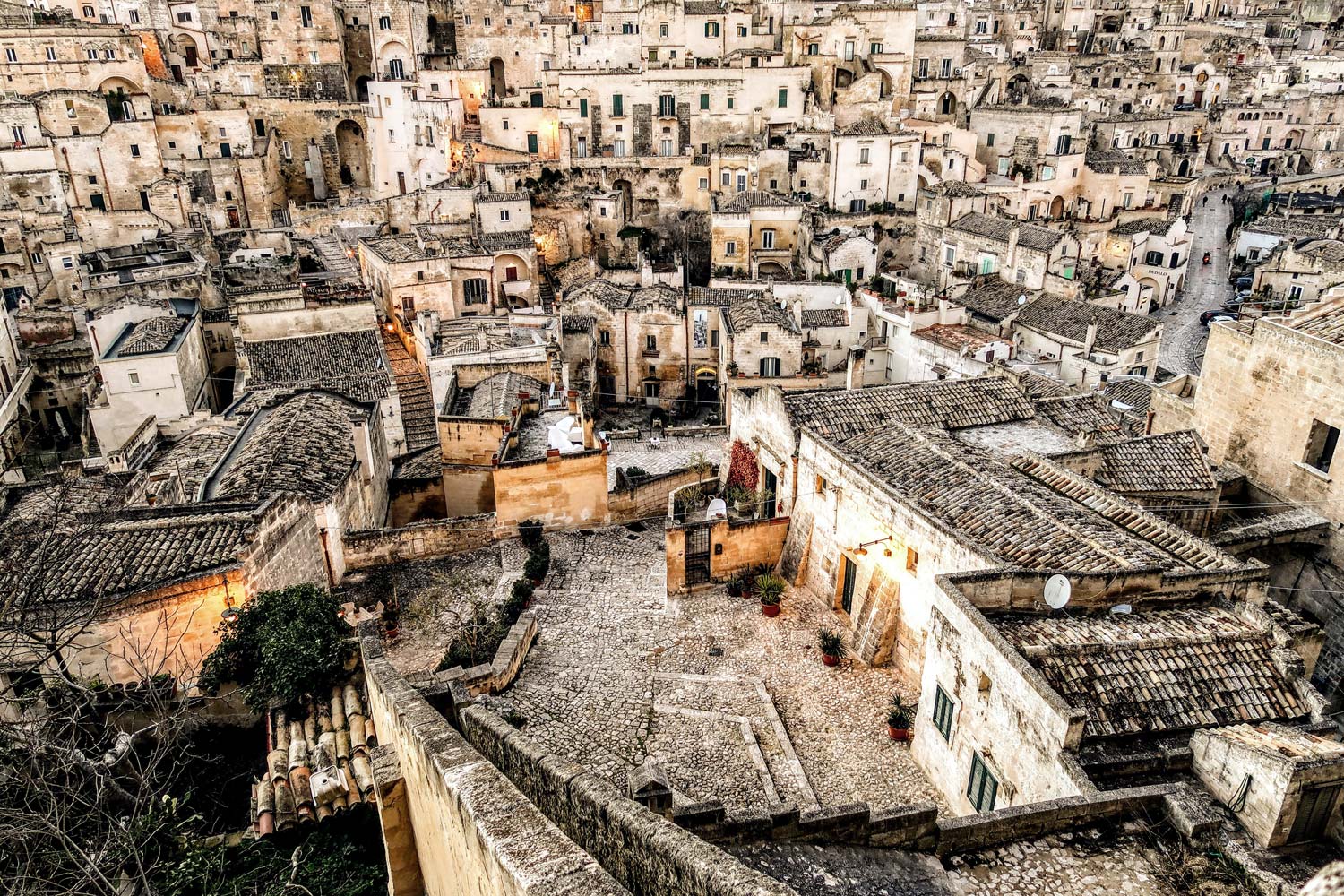
Change
Carlo Levi's book changed the history of Matera. Day after day it influenced other people. Finally, three years after its publication, it has reached where no one has reached for decades: the consciousness of the rulers. The Italian politician Palmiro Togliatti, when he saw Matera in 1948, gave it a name that has gone down in history: "national disgrace".
Another two years had to pass for the Italian Prime Minister Alcide De Gasperi to see Matera with his own eyes. It was clear that direct contact with the disaster of the city at that time would have a significant impact on it.
Two years later, in 1952, the forced relocation of all 15 Sassi residents to the newly built settlements in the Piano district began.
Dead city
The relocation of all residents to their new homes made Sassi suddenly empty and dead. Many of the displaced, despite the incomparably better living conditions (access to running water, electricity, etc.), did not know how to get used to the new way of life. Accustomed to living in large groups (often all in one room), they did not find themselves in separate apartments, separated from each other. Some of the inhabitants left their new homes and, despite the bans, returned to live in Sassi, to their rock pits. However, it was illegal. The extinct Sassi was regularly patrolled by law enforcement, and returning residents were sent back to their new homes. To make returns difficult, the entrances and windows of the houses were boarded up and bolted. Sassi was dying, gradually deteriorating for almost four decades.
At that time, the main users of the empty buildings were hippies, artists and drug dealers.
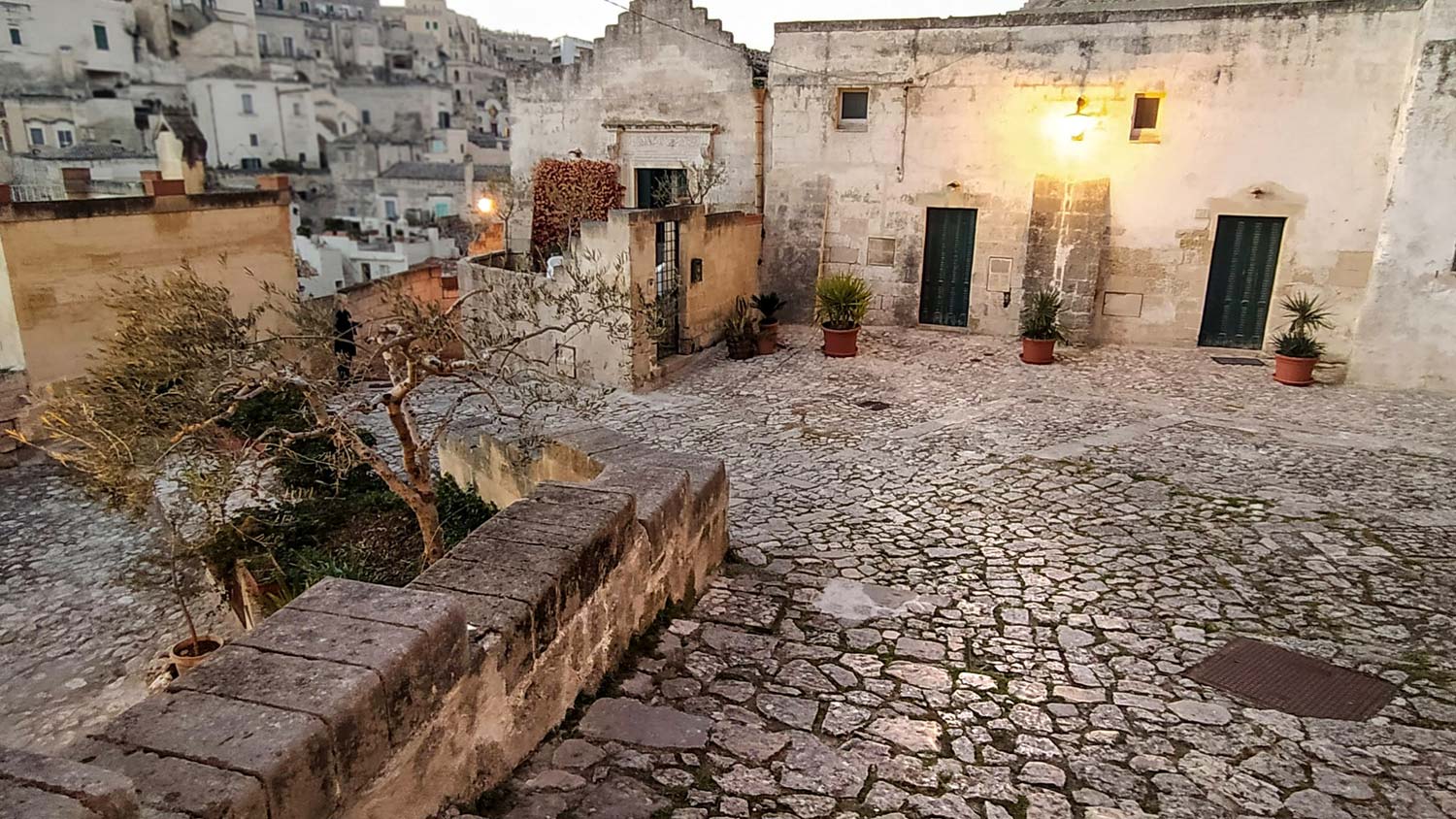
UNESCO List
The change came in 1993, when Matera was entered by UNESCO on the World Heritage List. Sassi and the Rock Church Park were considered the most outstanding, intact example of cave (troglodyte) settlements. This fact made a significant turnaround, although not immediately. Slowly and laboriously, the people's return to Sassi began. This time, however, the return is not to live in caves, but to renovate these caves, creating unique hotels, restaurants and art galleries.
The process of bringing Sassi back to life took a really long time. When I first visited Matera in 2010, Sasso Caveoso still looked like a ghost town. Tourist traffic (even though it was the middle of summer) was minimal. Visiting Matera 10 years later in 2020, you could see the difference with the naked eye. Even though in 2020 I visited Matera not in summer but in the middle of winter, this city was full of people. Empty and abandoned buildings could be counted on the fingers of one hand. There were a lot of people in the streets. Tourists strolled in every part of the city, and the cafes and restaurants were operating at full capacity.
It was a different, bustling city.
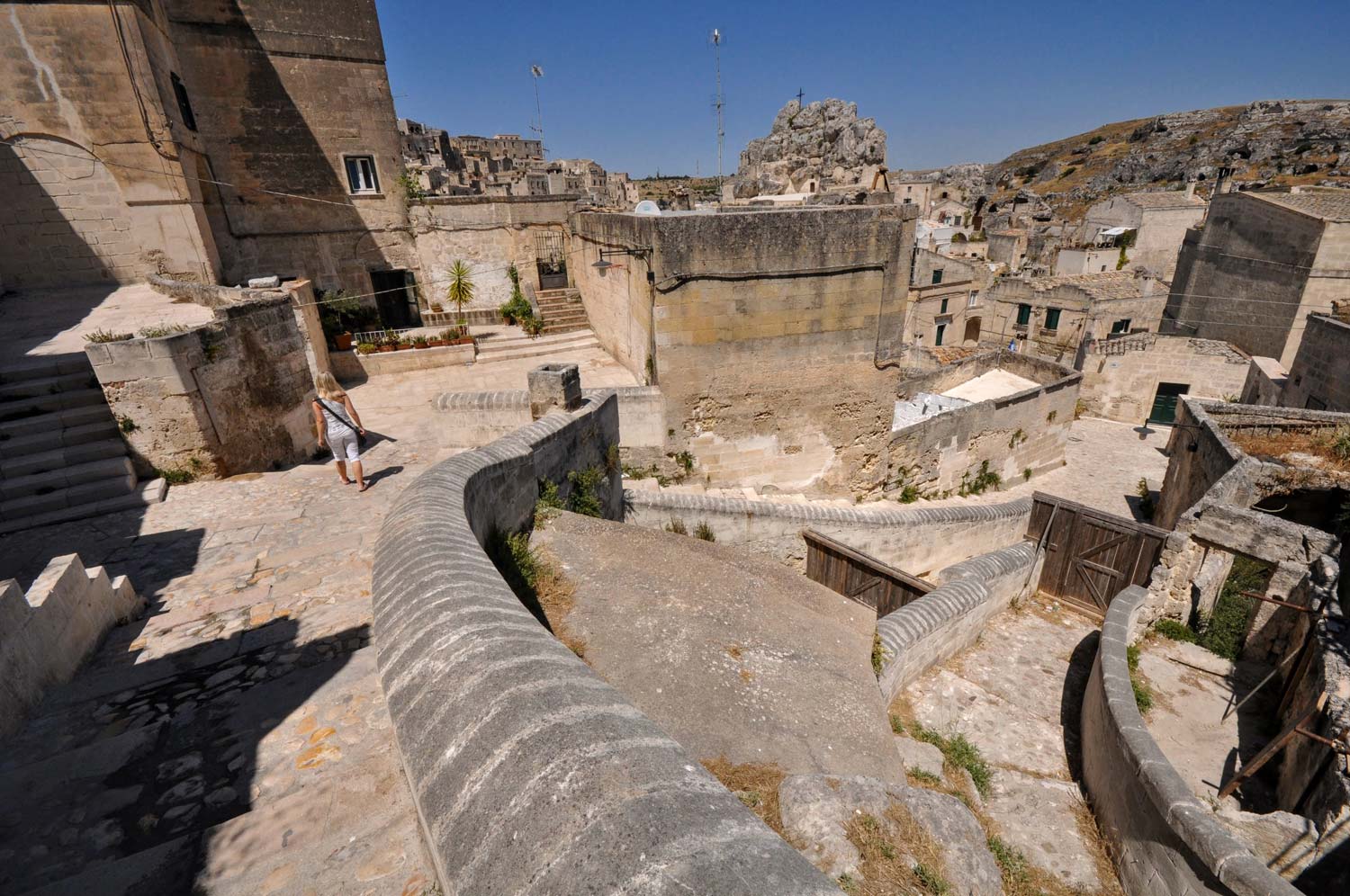
European Capital of Culture 2019
Today Matera is having good days. It attracts tourists from all over the world. It has become famous and popular, although it doesn't seem to be overly crowded all the time. There is a great hotel base in the city, with extremely atmospheric accommodation (I will write more about it a bit below, describing our accommodation, where we could enjoy the insane atmosphere of the city). Throughout Sassi you can find plenty of bars and restaurants for tourists of all budgets. We used the cheap ones, but also the slightly more expensive ones. From vending machines with sandwiches, through quick take-away bars, served from a glass case, to restaurants with a sophisticated menu.
Matera has developed in such a way that in 2019 it could boldly assume the responsibilities of the European Capital of Culture. It probably influenced the further development of the city and ... an increase in prices. It always goes hand in hand. So let's plan a trip to Matera. Its popularity will continue to grow. It's for sure, so the sooner the better (... and cheaper)
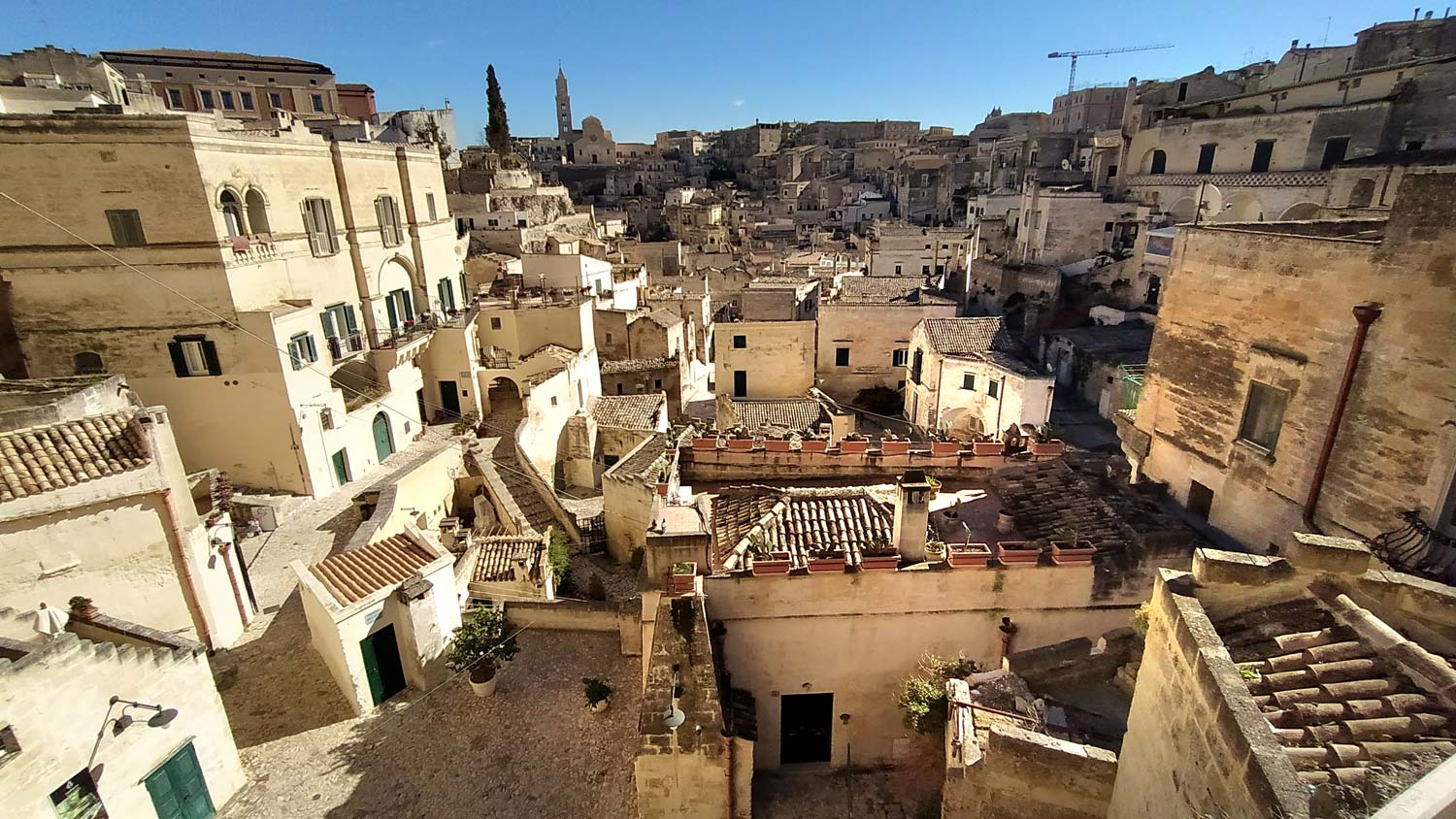
An overwhelmingly sad beauty
Walking through the streets of Matera, I always have in my mind the images that were created while reading Carlo Levi's description. Sassi is beautiful, uniquely beautiful. Cannot be compared to anything. I always absorb them with all my senses. I love them. It is a place that is always at the top of the list of destinations I would like to go to again. Knowing its history makes its beauty reach me even more, more strongly, deeper ... It is touching and sometimes sad, but ... you should not overdo it with sadness.
It's good that we live in a time when Matera shines with full radiance and has power, enormous power!
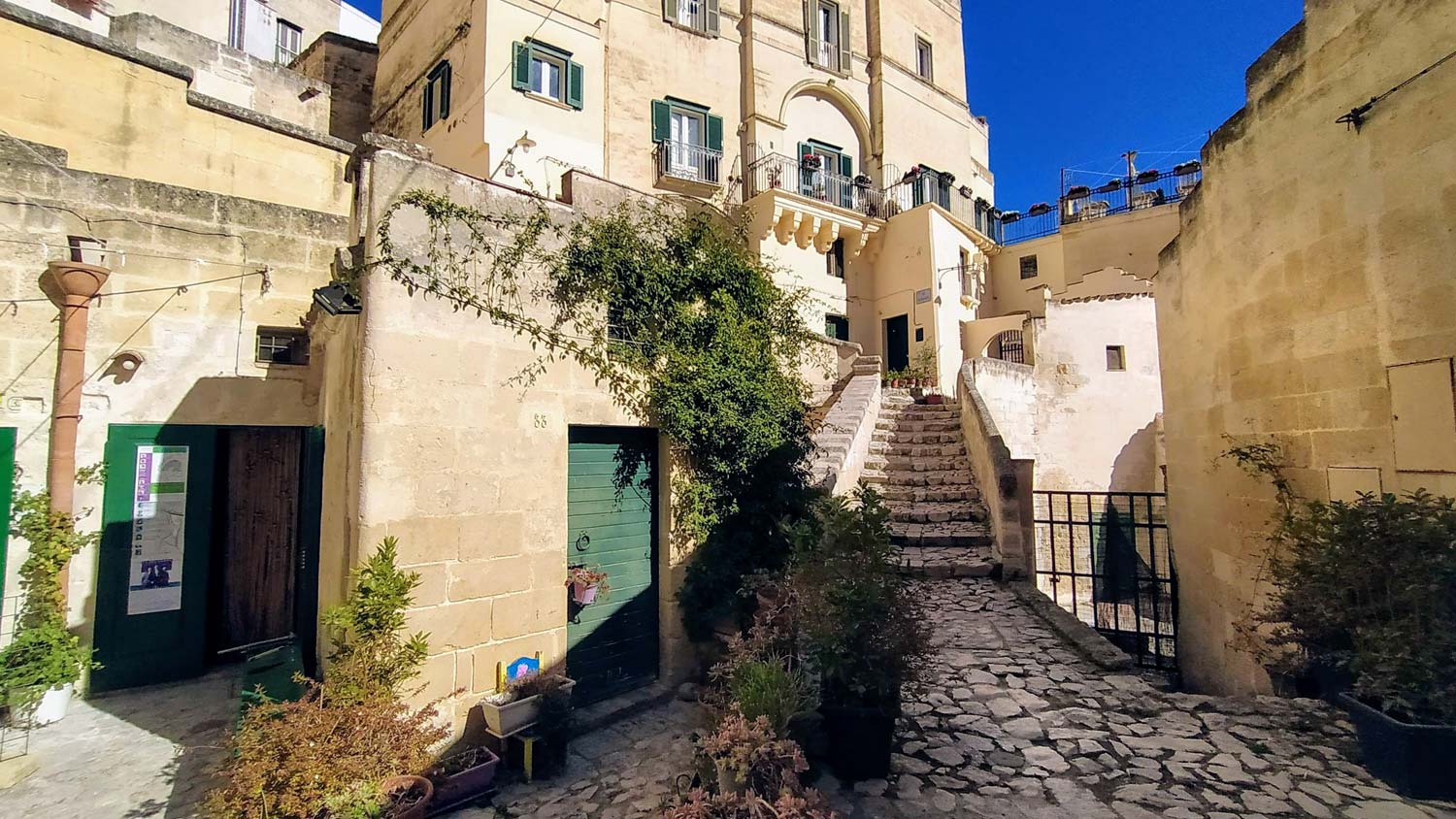
Matera map and sightseeing
When I was creating a map of attractions in Matthew, I had a big problem. There are so many places that deserve a recommendation and so many unique viewpoints that it made no sense to put them all on the map. So I only included the key ones. Some are important for their historical value and some for insane views and scenery. At the same time, the right selection of the main points allowed me to route the route in such a way that it would pass through the most interesting parts of the city. So along the way you will come across a lot of cool objects that are not on the map. Such a surprise! Keep your eyes peeled and ... often look back (!!!), especially when you are climbing the stairs up the city. The views behind your back will be overwhelming and will change almost every few steps. I recommend frequent stops. It is not worth the rush.
WARNING! The colors of the trails are given by me. The routes marked by me are not marked with colors in any way.
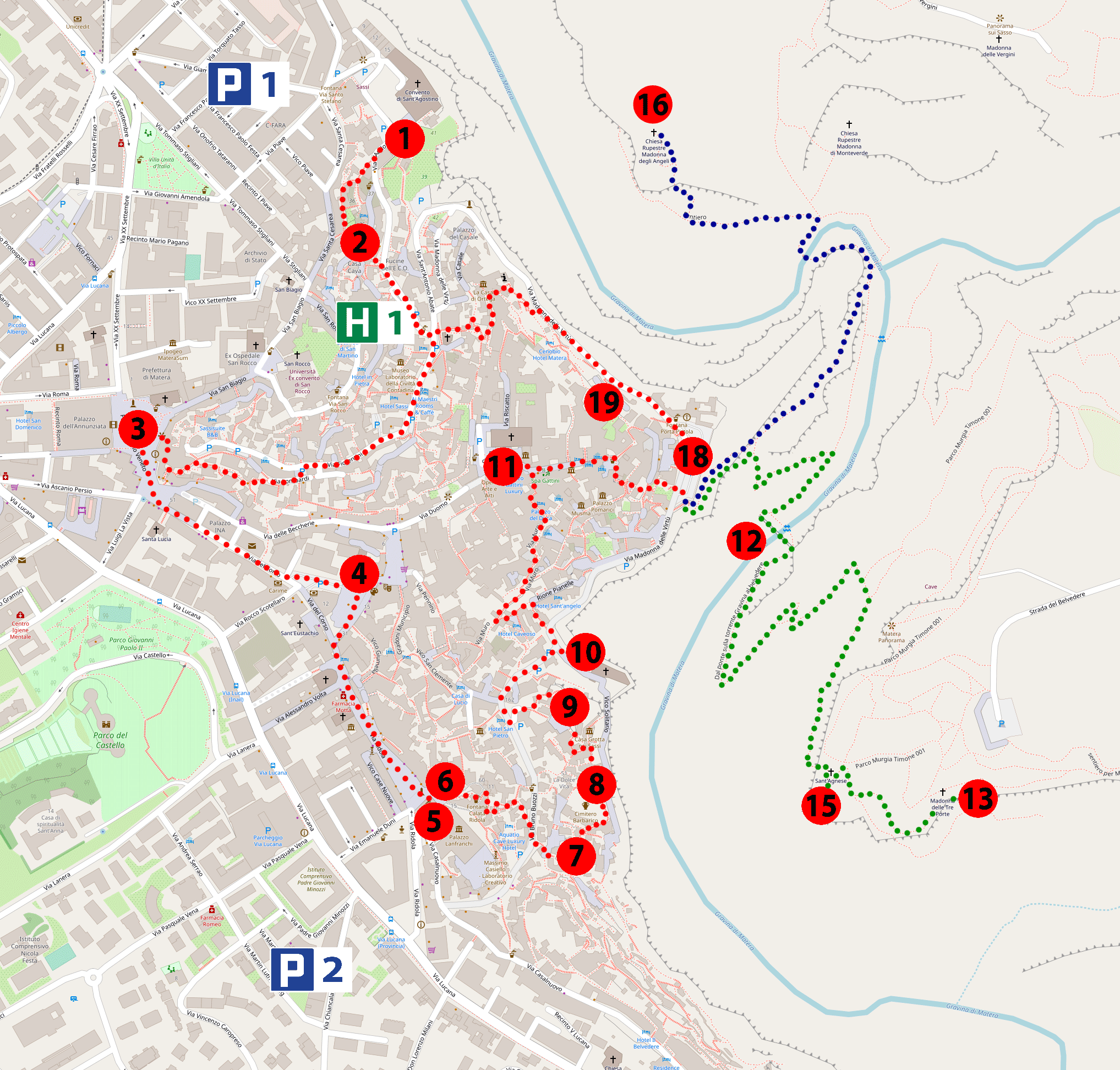
I divided the sightseeing route into three parts and gave them different colors:
- Red colour - basic walk around the city, the most beautiful monuments, the most beautiful districts and parts of the city and viewpoints. The route seems to be short, only about 3 km. However, it is so full of attractions and objects that you cannot just walk by, but need to spend some time exploring, that you can go ahead and spend the whole day there. There really will be something to do.
If you get up early in the morning and be in Mateara in the summer, when the day is very long, and you have enough energy (remember that it is terribly hot here in summer and walking is not so easy), you can try to combine this walk with walk takes the other side of the Gravina creek (green or blue). However, I do not recommend doing this. In my opinion, such a solution does not make sense (it is too strenuous), but the plan I have prepared makes it possible.
Note that the route is marked in red has the form of a loop. Thanks to this, it doesn't matter where you start it. You will always come back to the starting point and see all the attractions 🙂 This solution gives you the freedom to choose your accommodation. So you can choose to stay anywhere in Sassi and it will not make it difficult to explore the whole city in any way.
- green color - a trip to the other side of the Gravina stream, to rock churches and caves. Completing this route will require you to climb twice to the slope of the ravine with a stream flowing at its bottom. Once on the way to caves and churches, and the second time on the way back. The total length of the route from the starting point to both sides is approximately 3 km. Once again, walking uphill in 40 degrees heat is not really easy, so don't plan to jump these 3 km like lightning in one hour.
- blue color - a second suggestion for a trip to stone churches, along a less obvious and less crowded trail. The length of the trail is similar to the previous one (about 3 km) but there is an important difference: there is no suspension bridge across the Gravina stream. You have to cross it in a way (depending on the current water level).
In my opinion, the optimal plan for visiting Matera is at least two days. One day for a walk around the city (red route), and the second day for a walk on one of the routes to the other side of the Gravina creek and (by car) underground, round houses on the Murgia Timone plateau (described below in point 17).
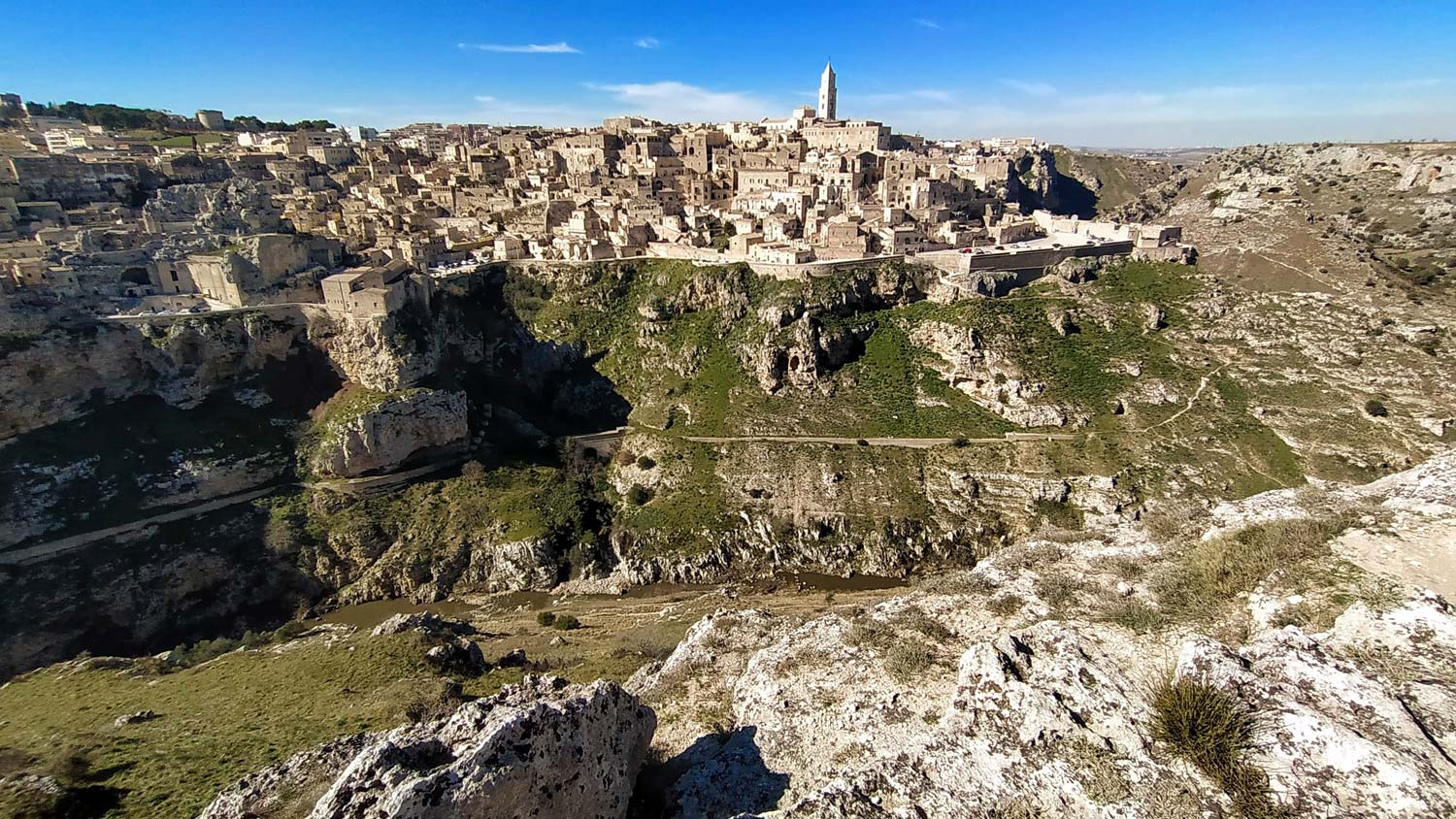
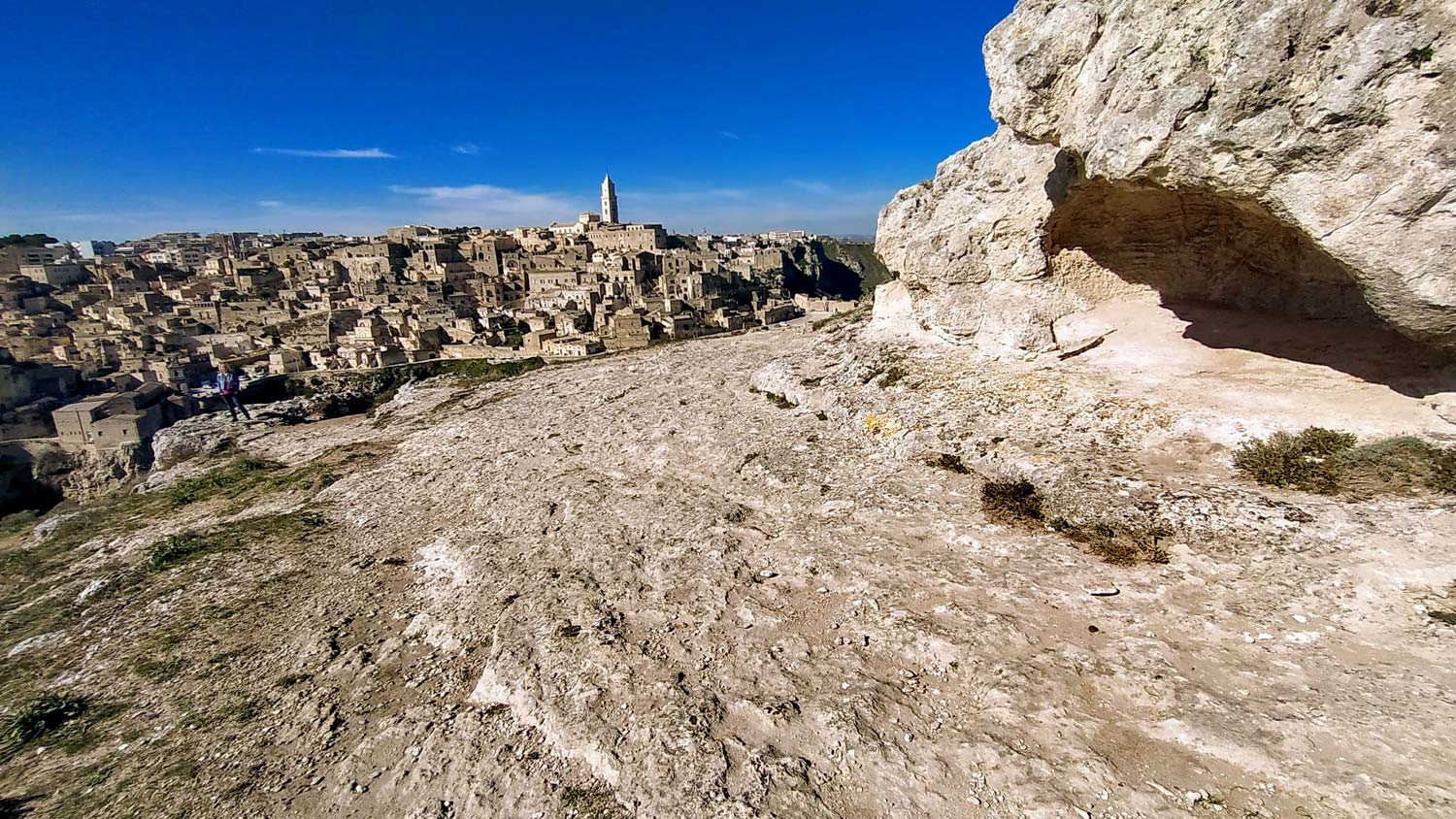
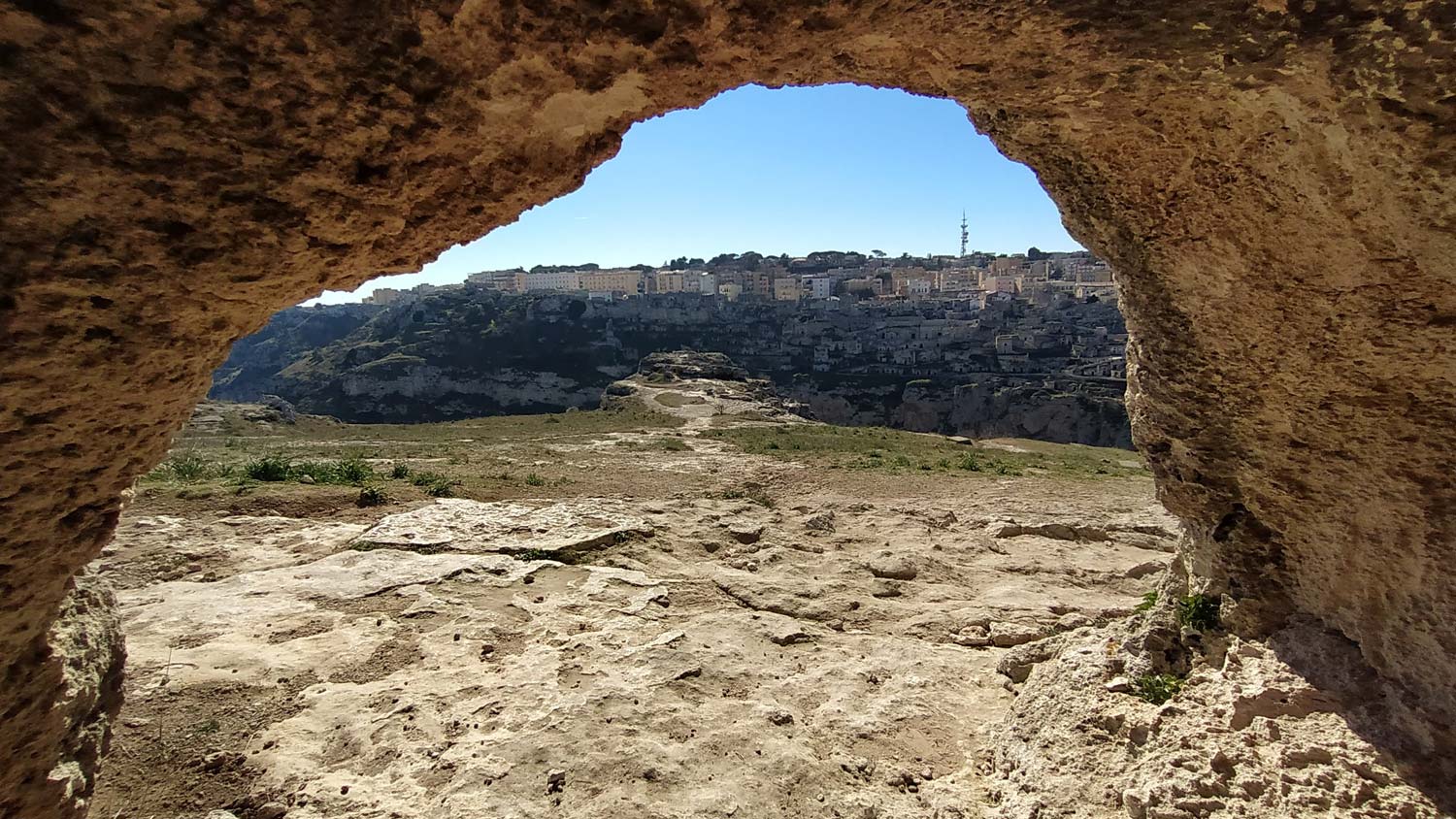
Matera attractions
1. Sasso Barisano viewpoint next to the Monastery of Sant'Agostino
The viewpoint is at the main entrance road to Sasso Barisano. From this place, photos known from popular postcards are created. The frame is more or less like in the picture below. The views are beautiful.
The nearby monastery and church were built in the mid-1734th century. They were destroyed in XNUMX during a strong earthquake, and then restored and we can admire them today.
Viewpoint in Sasso Barisano, GPS coordinates:
40°40’11.3″N 16°36’35.4″E
40.669817, 16.609838 - click and route
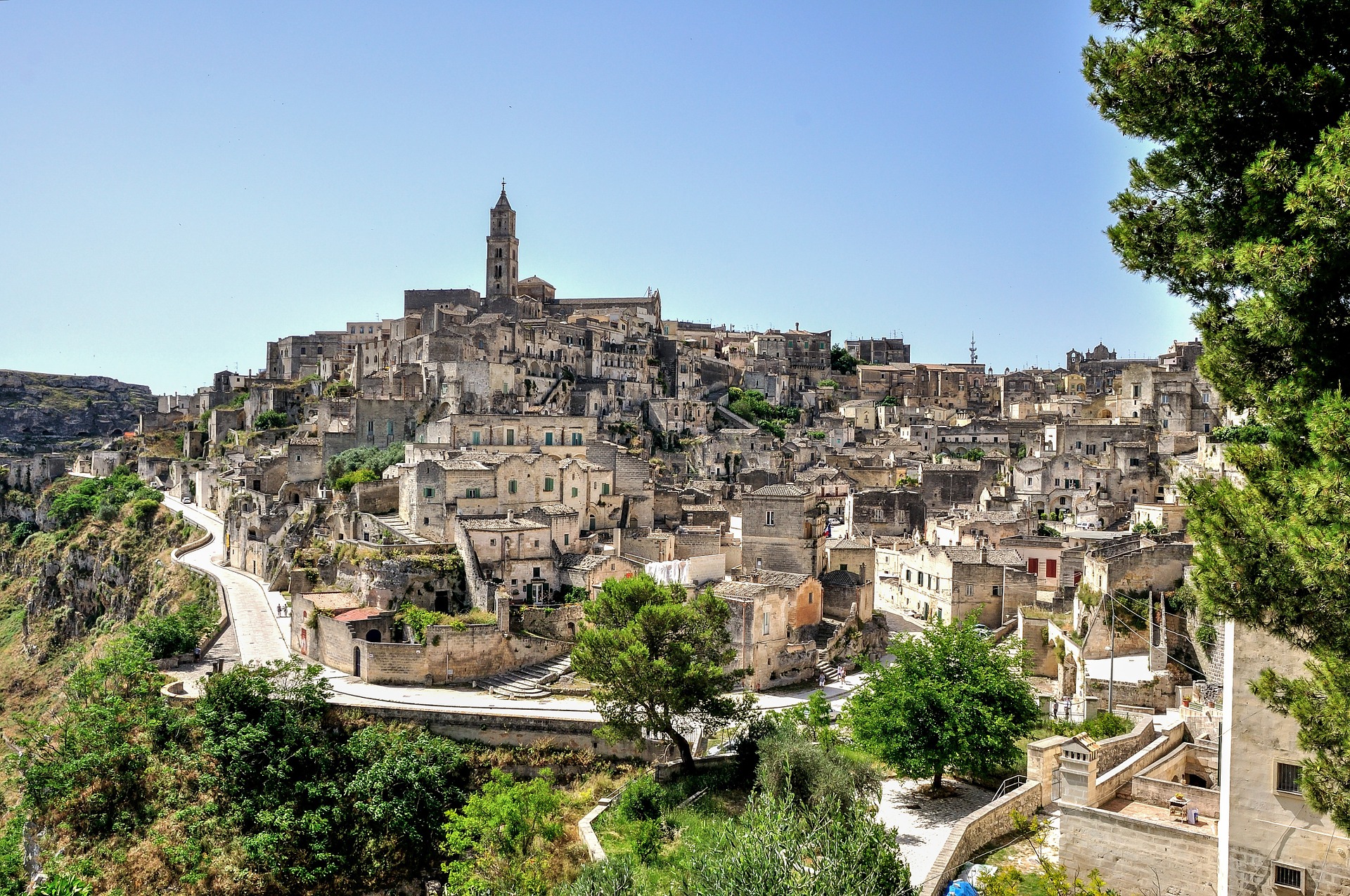
2. Sasso Barisano viewpoint next to the Church of San Pietro Barisano
A viewpoint close to the previous point. However, it is not worth avoiding it, because despite the proximity of the previous point, the view of Matera from this place is completely different and extremely interesting. This is another place to take a very famous frame from Matera, with the tower of the Church of San Pietro Barisano in the foreground (the classic frame from this place is shown in the photo below).
The church of San Pietro Barisano next to the viewpoint is the largest rock church in Matera. The first rock forms discovered under its floor come from the XNUMXth - XNUMXth centuries. The rooms in the lower parts of the church, with special niches, were used for drying corpses. This posthumous privilege was reserved mainly for priests.
After the displacement of the population from Sassi, in the 60-70s most of the works of art in the church were stolen or destroyed.
Viewpoint in Sasso Barisano, GPS coordinates:
40°40’07.8″N 16°36’33.1″E
40.668834, 16.609205 - click and route
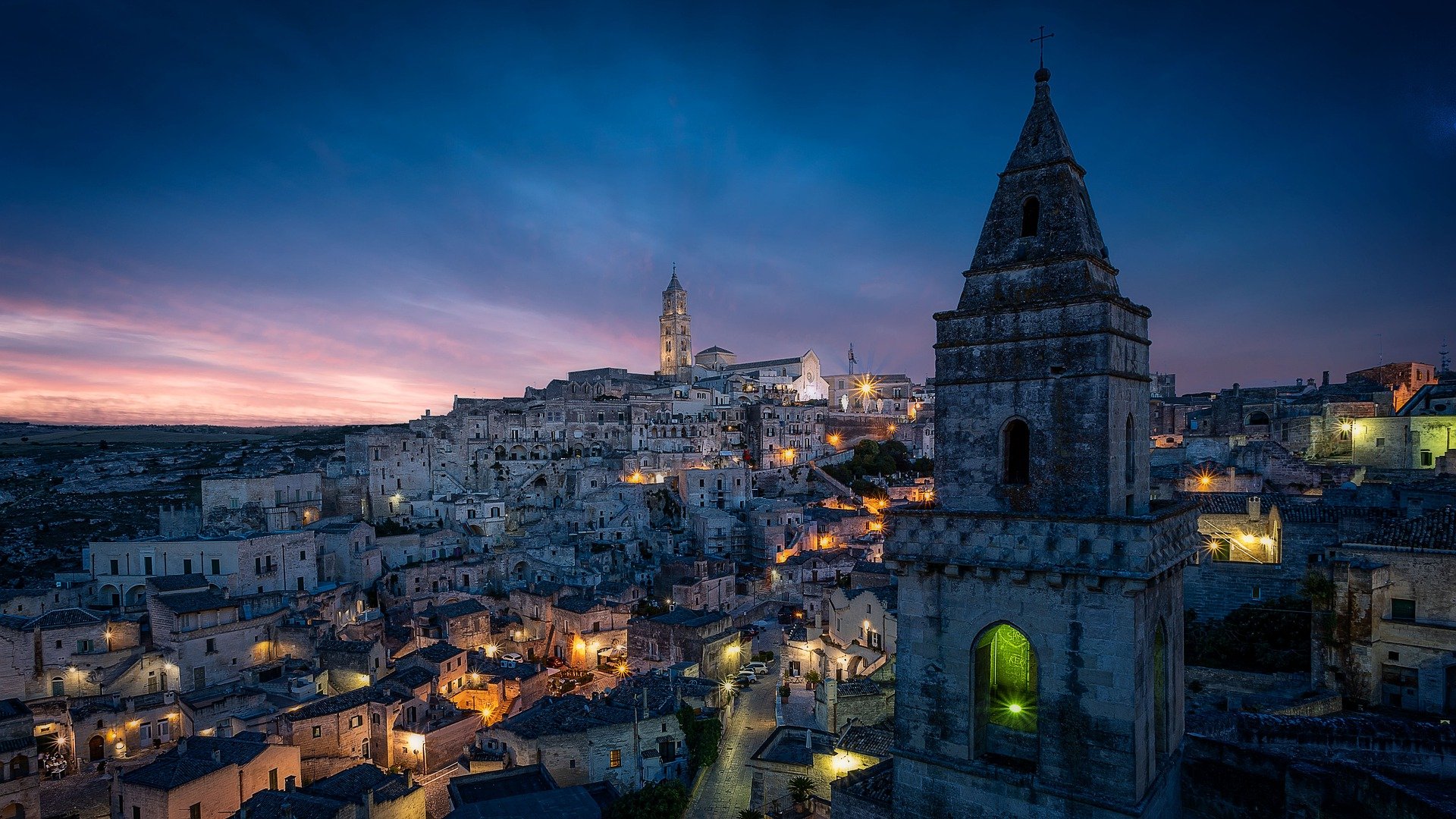
3. Palombaro Lungo
Palombaro Lungo is an underground, artificial water reservoir. There are many similar tanks in Matera and they create an amazing underground city. All reservoirs make up a unique water collection and storage system for the city's inhabitants. Without them, in such a hot and dry climate, the city would not have a chance to develop, especially when the population began to exceed several thousand or several thousand inhabitants.
Palombaro Lungo is the largest of the existing reservoirs in Matera and is open to the public. It's really worth seeing with your own eyes.
The tank is located under under the square of Vittorio Veneto and was created by combining several previously existing caves (work related to the connection of the caves began in the XNUMXth century and lasted almost until the end of the XNUMXth century).
It ceased to be needed only in 1920, when it was built Apulian Aqueduct (one of the world's largest construction projects at the beginning of the XNUMXth century). I wrote more about it in post about Leuca.
It is worth paying attention to the fact that the water reservoirs were carved in soft and water-permeable tufa rock. So how did the tanks hold the water? The walls of the tanks were covered with a waterproof mortar (cocciopesto), made according to an ancient recipe, based on very finely crushed bricks (or tiles) and slaked lime.
The inhabitants of Matera took water from the reservoir by letting small buckets inside through two external openings.
Entrance to the Palombaro Lungo reservoir in Vittorio Veneto square, GPS coordinates:
40°40’00.9″N 16°36’23.4″E
40.666919, 16.606502 - click and route
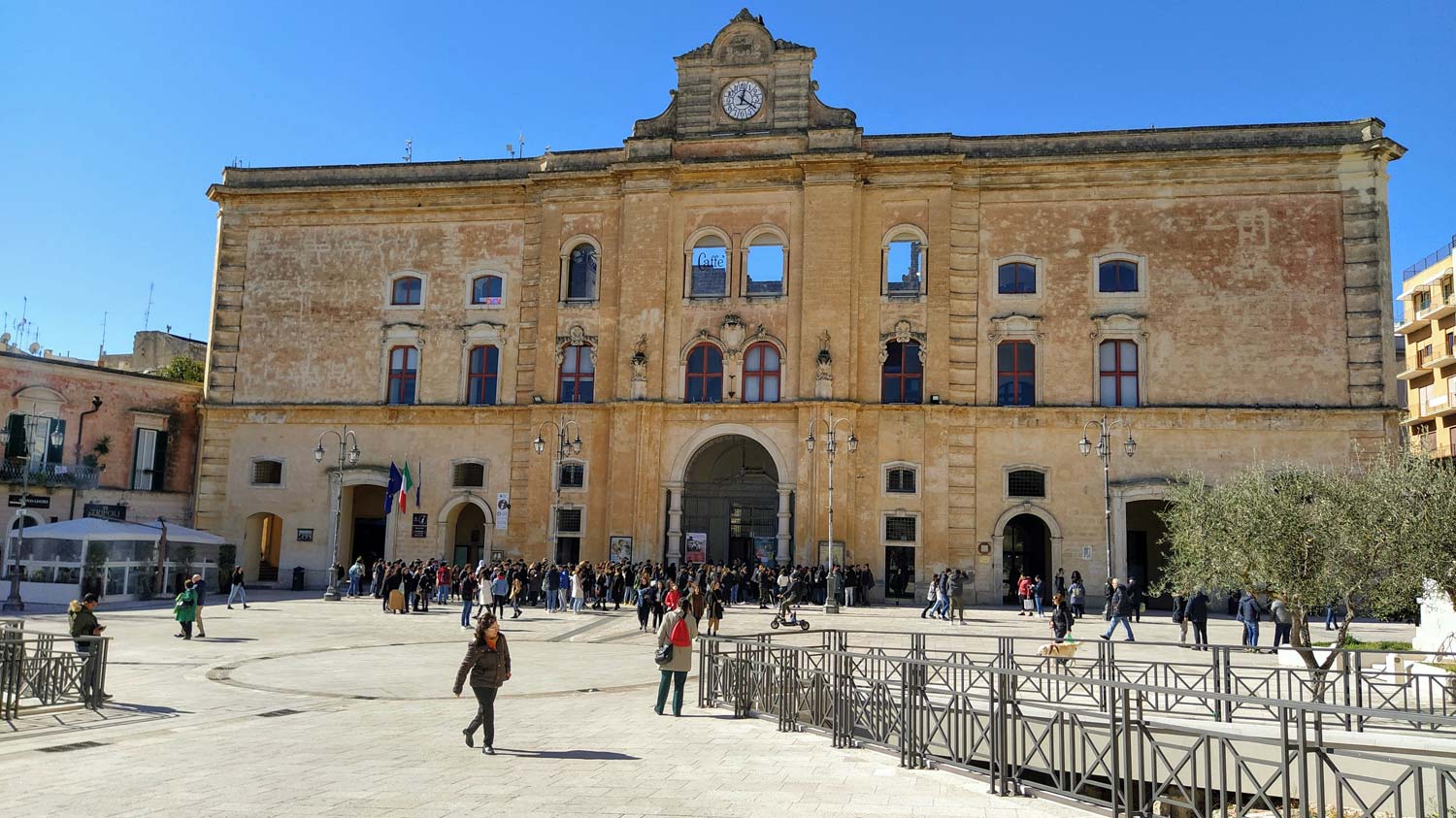
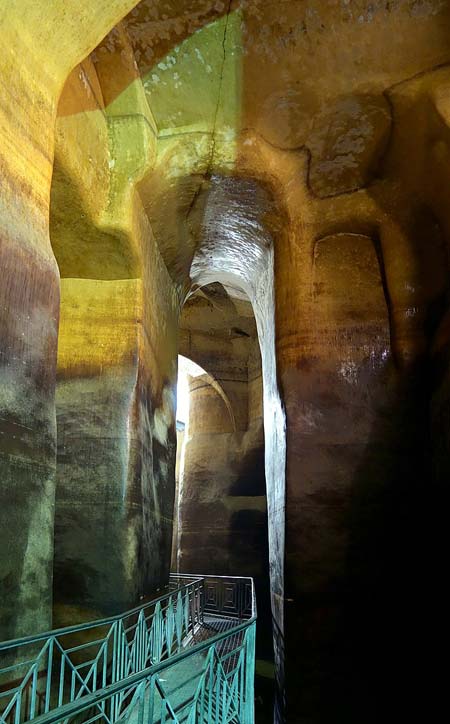
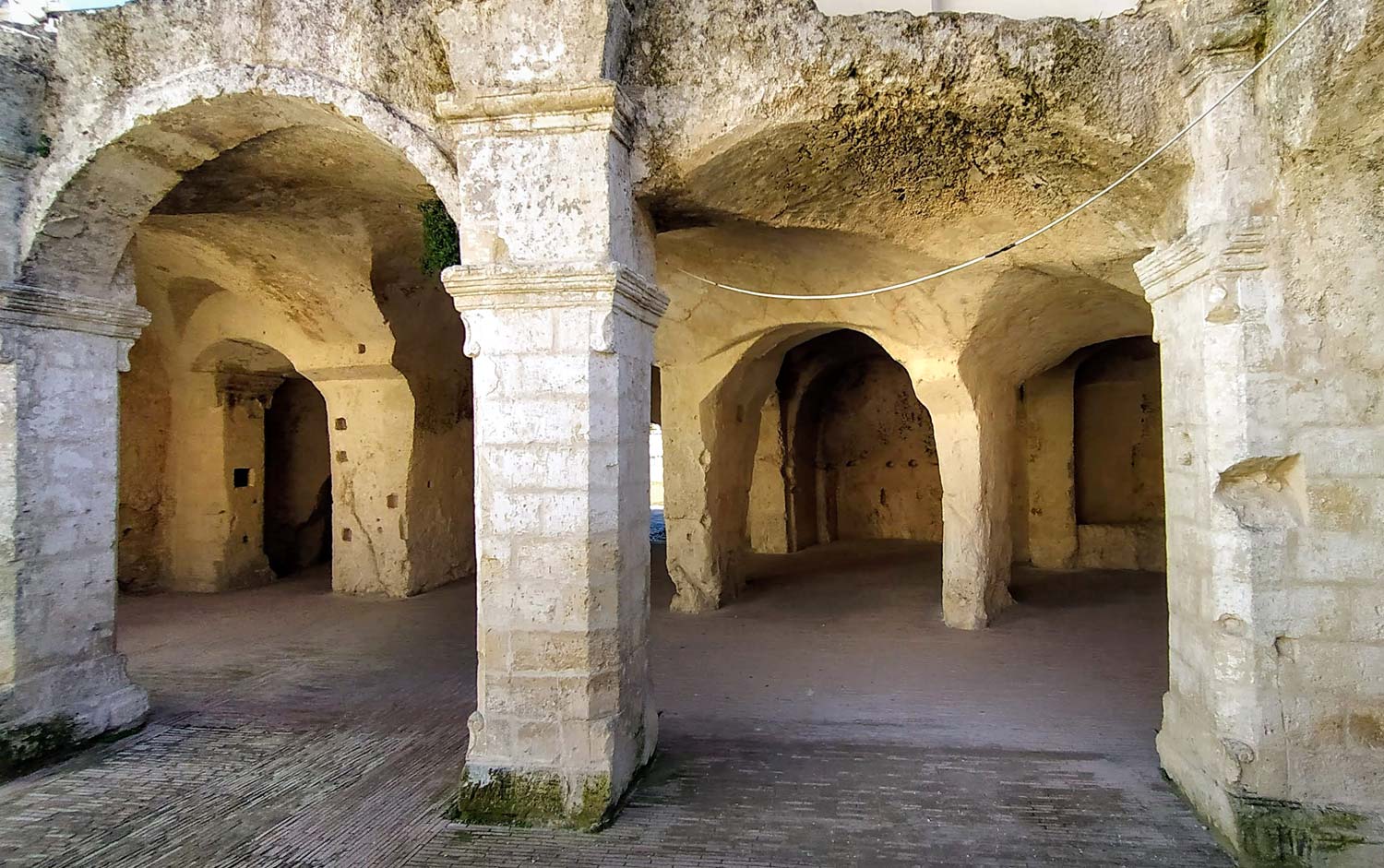
4. Church of Saint Francis of Assisi
It is no coincidence that the beautiful, baroque church bears the name of Saint Francis of Assisi. This name was given to the church in memory of the saint's visit to Matthew in 1218.
The main body of the church was built in the XNUMXth century, and then it was rebuilt many times, until the XNUMXth century, when a beautiful, baroque facade was created. Since then, the church has remained unchanged.
During our visit (in 2020), a sculpture "Surreal Piano" by Salvador Dali stood in the square in front of the church. It was one of the elements of the exhibition of the artist's works, displayed on the occasion of the event, which in 2019 was awarded the title of the European Capital of Culture. While walking around Matthew, one could come across three large and about 200 smaller works by the artist. Great thing!
St. Francis of Assisi, GPS coordinates:
40°39’55.3″N 16°36’33.4″E
40.665350, 16.609268 - click and route
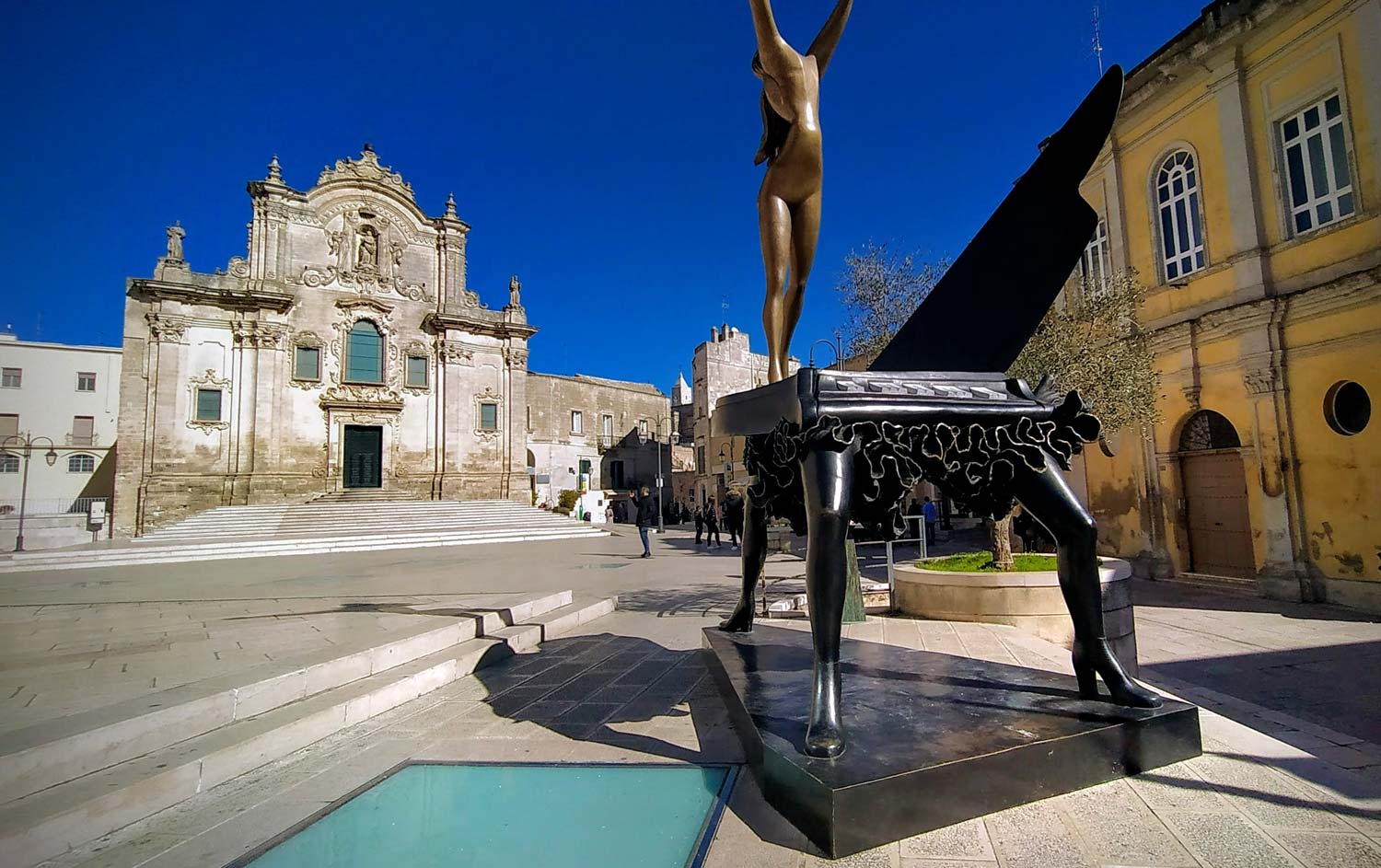
5. Lanfranchi Palace
One of the most beautiful buildings in the city. Built in the second half of the XNUMXth century, by order of Archbishop Vincenzo Lanfranchi, intended for a seminary. It currently houses the National Museum of Medieval and Modern Art of Basilicata.
Its construction caused many problems, because there were a lot of empty inter-rock spaces under the building and the foundation of the building was unstable.
Lanfranchi Palace, GPS coordinates:
40°39’47.3″N 16°36’36.7″E
40.663131, 16.610206 - click and route
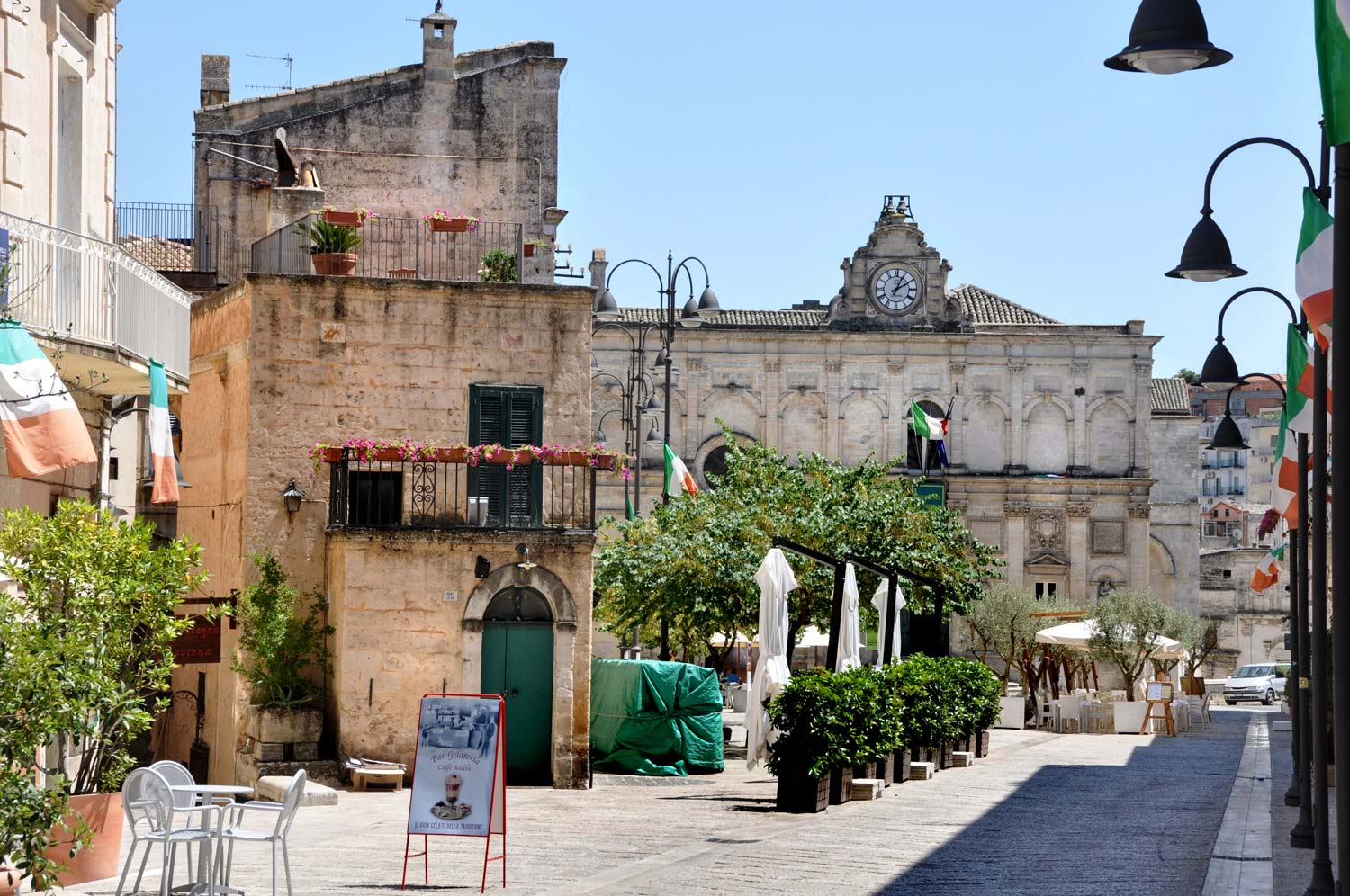
6. Sasso Caveoso viewpoint (Belvedere di Piazza Giovanni Pascoli)
The main viewpoint on the older part of the matter: Sasso Caveoso. The view is beautiful and poignant, and you can take some photos along the way.
Belvedere di Piazza Giovanni Pascoli viewpoint, GPS coordinates:
40°39’47.6″N 16°36’36.6″E
40.663231, 16.610174 - click and route
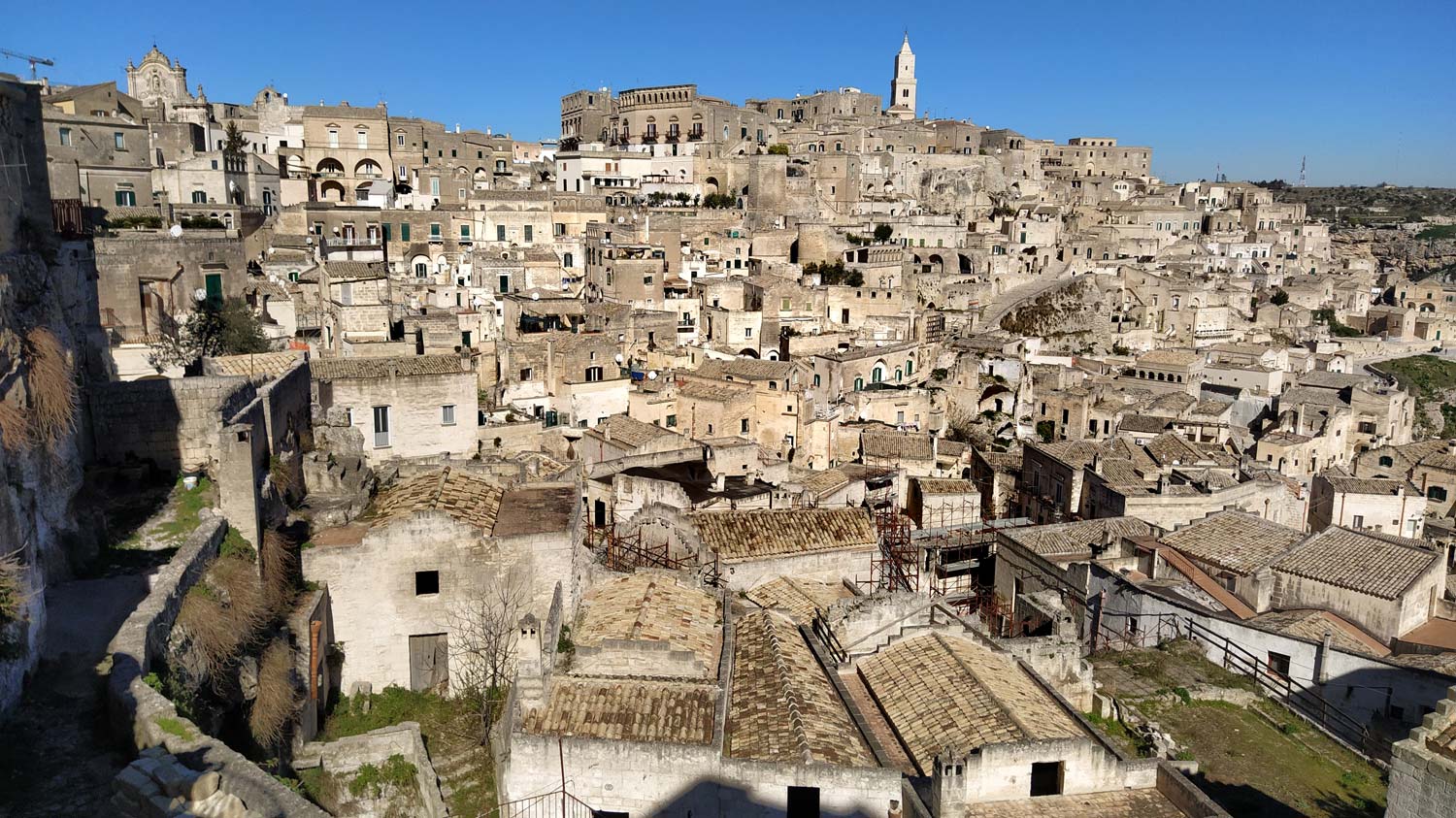
7. Church of Santa Lucia alle Malve
The rock church of Santa Lucia alle Malve dates back to the XNUMXth century AD and is often considered the most important of the churches in Matera. Originally it consisted of three naves, but only one of them has remained the church until today. The other two were converted into apartments and warehouses over time.
In the church, you can see beautiful frescoes that date back to the XNUMXth century. It is worth noting that some Ferski have identical shapes, but differ only in the colors filling them. They were painted ... from a template. The template placed against the wall was wiped with a piece of cloth soaked in coal dust and this is how the contours of the drawing were created. The rest of the process is already easy to imagine.
The church inside makes a great impression, as you can see in the short video below.
Church of Santa Lucia alle Malve, GPS coordinates:
40°39’47.7″N 16°36’44.5″E
40.663242, 16.612350 - click and route
8. Casa Grotta nei Sassi residential house
As the name suggests, it is a residential grotto, i.e. a house typical for Matera, with characteristic furnishings, presenting the conditions in which people lived here in the 50s. The house has been prepared especially for visitors and allows you to better feel the atmosphere of recent years, before the displacement of residents from Sassi Caveoso.
Casa Grotta - a traditional home of the inhabitants of Matera, GPS coordinates:
40°39’49.6″N 16°36’44.1″E
40.663774, 16.612261 - click and route
9. Church of Saint Mary of Idris
Probably the most beautifully situated rock church in Matthew. It is located inside the rock, the shape of which is very characteristic and immediately catches the eye. The same rock also houses the crypt of San Giovanni in Monterrone, precious for its XNUMXth-century frescoes.
The façade of the church dates back to the XNUMXth century, when it was rebuilt after the previous one had collapsed. The interior of the church is decorated with some nice frescoes, which were significantly damaged during the time when Matera was depopulated after the displacement of its inhabitants.
A short film below shows some photos from inside the church.
Saint Mary of Idris Church, GPS coordinates:
40°39’51.0″N 16°36’43.5″E
40.664163, 16.612086 - click and route
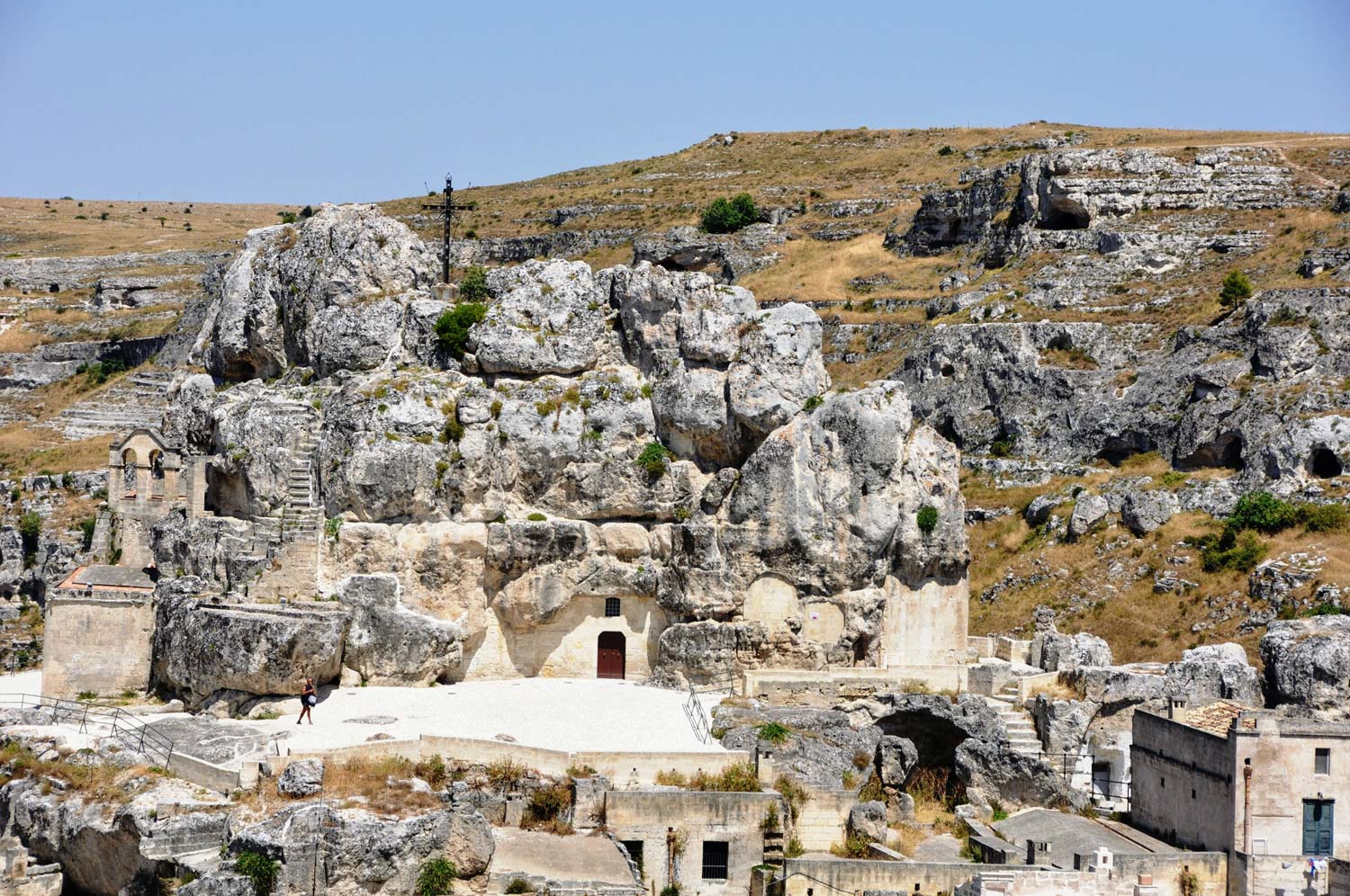
10. Church of San Pietro Caveoso
The church is also known as the Church of St. Peter and Paul. It dates back to the XNUMXth century, but has been rebuilt many times in the meantime. In the XNUMXth century, a baroque façade and a belfry were added.
The square in front of the church is also an excellent vantage point over the valley of the Gravina stream.
Church of San Pietro Caveoso, GPS coordinates:
40°39’52.1″N 16°36’44.7″E
40.664462, 16.612414 - click and route
11. Cathedral of Matera (Cathedral of Madonna della Bruna and Sant'Eustachio)
The Cathedral of Matera was built on the highest point of the hill separating the two oldest districts of Matera: Sasso Caveoso and Sasso Barisano. It was built in the thirteenth century on the site of the Normandy castle that had existed before. In order for such a large and massive building to be built at the top of the hill, the rocky base had to be reinforced and built up by about 6 meters. The cathedral and the adjoining tower dominate the city.
The external shape and appearance of the building has remained virtually unchanged since its construction.
The interior is impressive and richly decorated. In one of the aisles there is a very famous and very interesting "stone shed". It is a nativity scene made of hard stone, some elements of which resemble fragments of Matera.
Cathedral of Matera, GPS coordinates:
40°40’00.0″N 16°36’39.7″E
40.666679, 16.611015 - click and route
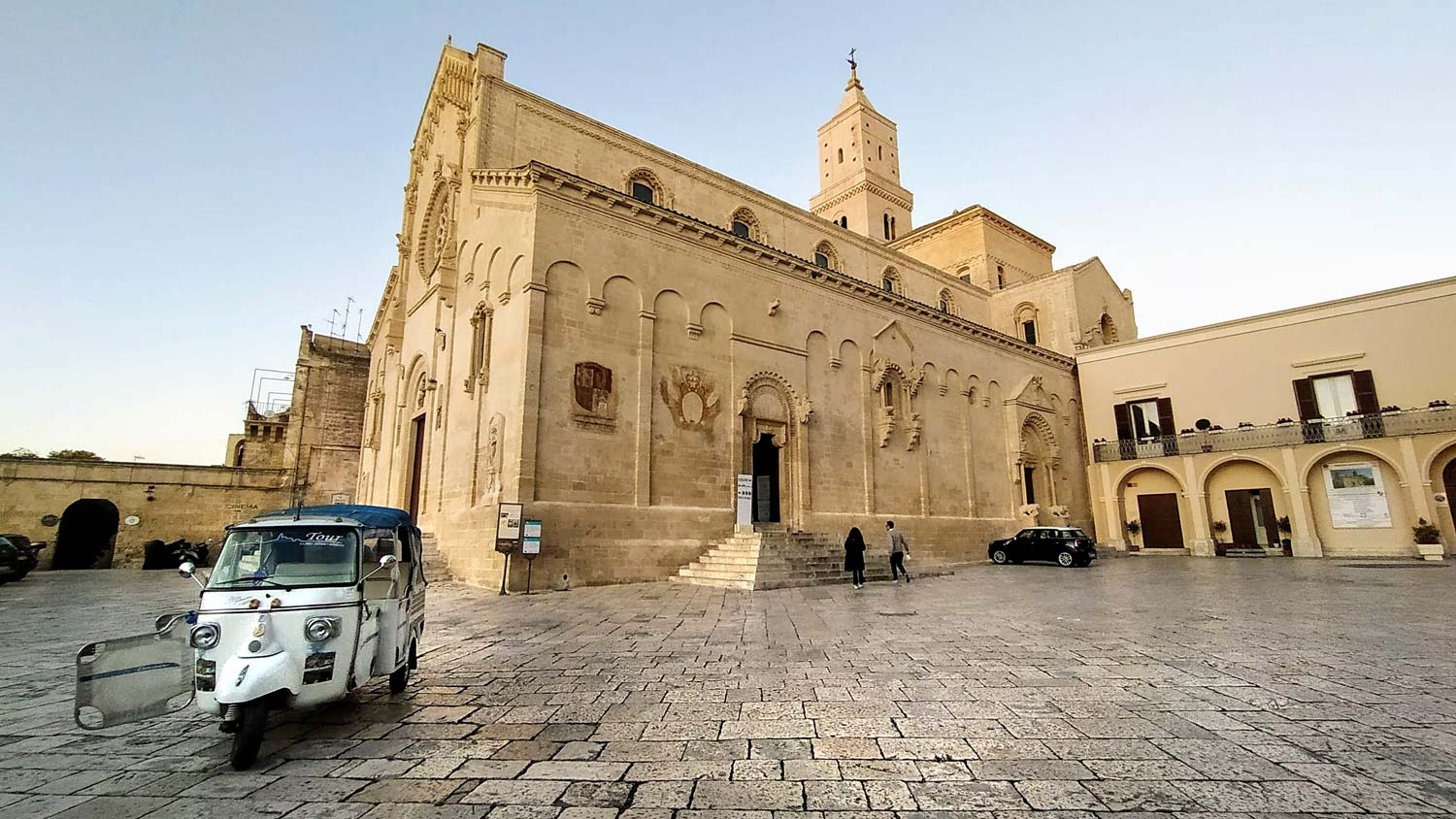
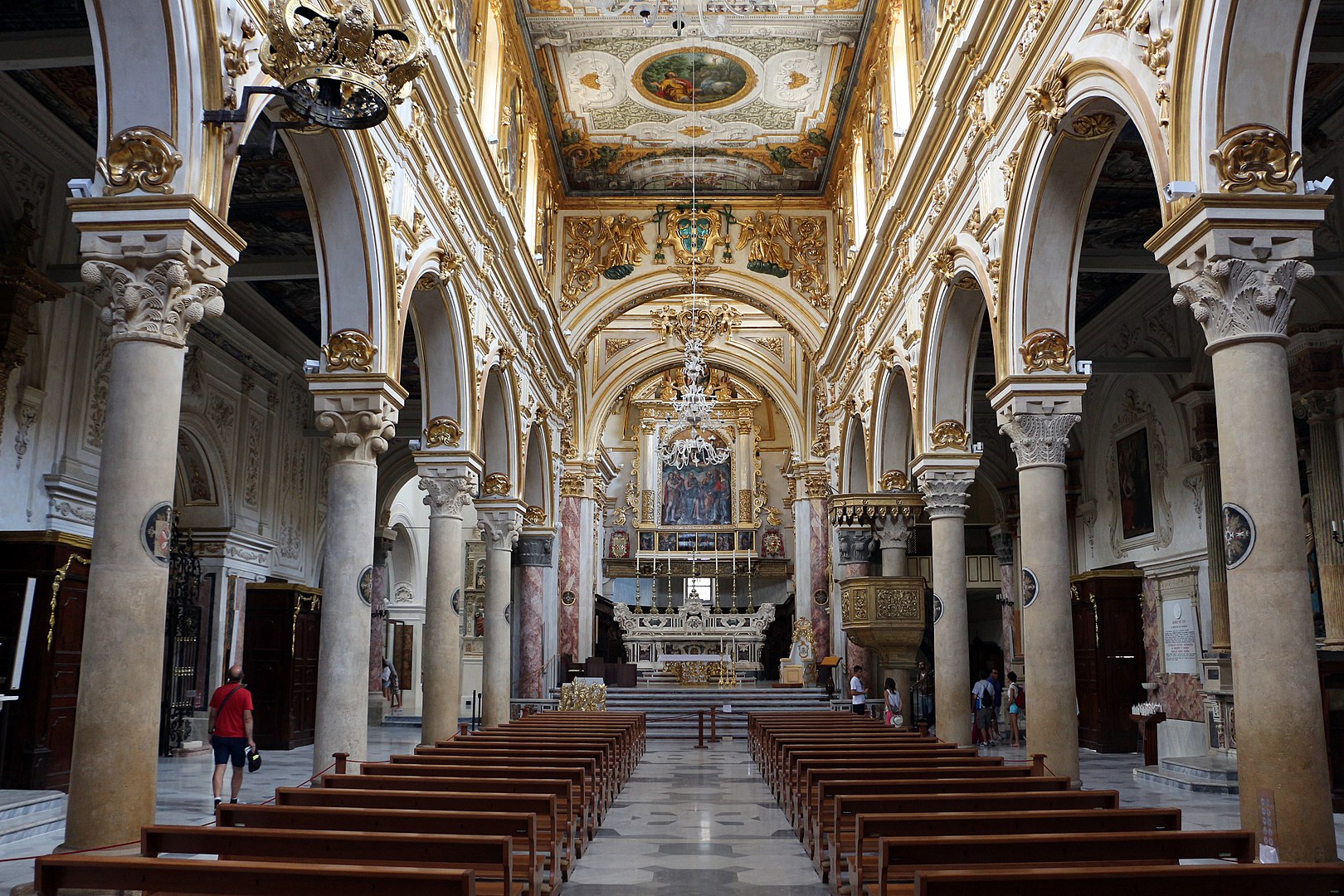
12. Tibetano della Gravina Bridge
In short, it is a suspension bridge over the Gravina stream. It connects the two edges of the valley, making it easier to go to the other side of the gorge during hiking trips from Matera towards the oldest, prehistoric caves and churches. This area is entered on the UNESCO list as Park of the Rupestrian Churches of Matera (in free translation you can say Park of Stone Churches in Matera).
Suspension bridge over the Gravina stream, GPS coordinates:
40°39’56.5″N 16°36’52.9″E
40.665688, 16.614690 - click and route
Panoramic photo of the bridge over the Gravina stream (can be rotated and zoomed in):
13. Stone church of Madonna delle Tre Porte
One of the stone churches on the other side of the Gravina creek. Originally, the interior had a rectangular shape, supported by four massive pillars. Unfortunately, part of the church's surface collapsed.
On the walls there are frescoes created between the XNUMXth and XNUMXth centuries.
The stone church of Madonna delle Tre Porte, GPS coordinates:
40°39’47.6″N 16°37’01.5″E
40.663229, 16.617092 - click and route
14. Stone Church of San Falcione
Its origin dates back to the XNUMXth century. On the walls there are fragments of Byzantine frescoes, which are currently in very poor condition.
This church did not fit on the map I prepared. If you go to the other side of the Gravina creek by car, the church is right next to the access road that will take you along the plateau. I do not recommend walking to this church because it is just too far away.
Stone Church of San Falcione, GPS coordinates:
40°40’01.6″N 16°37’15.3″E
40.667118, 16.620909 - click and route
15. Asceterio di Sant'Agnese (Santa Maria dell'Arco)
For fans of the search, I present the coordinates of a tiny, one rectangular church room, to which a small, hidden, rock entrance leads.
Church of Sant'Agnese, GPS coordinates:
40°39’51.7″N 16°36’57.4″E
40.664346, 16.615939 - click and route
16. Church of the Madonna degli Angeli
A proposal for lovers of walks beyond the most frequented routes. A path leads to the church, which I marked in blue on the map.
The church has one room divided into three parts. The view of the interior of the church can be seen in the panoramic photo below. The photo can be rotated around its axis and zoomed in. The frescoes visible in the photo were created at different times, between the XNUMXth and XNUMXth centuries.
Church of Madonna degli Angeli, GPS coordinates:
40°40’11.3″N 16°36’48.0″E
40.669818, 16.613323 - click and route
17. Underground round houses on the Murgia Timone plateau
Villaggio Trincerato di Murgia Timone is a complex of Neolithic huts carved in the rock. The huts were dug as "holes in the ground." The main entrance led to them, from which further, underground rooms spread.
The typical appearance of the grotto on the ground can be seen in the panoramic photo I posted below.
Near the grotto visible in the photo there is a car park for tourists, from which a field path leads to the grotto.
Another entrance can be found in the immediate vicinity, in a radius of about 600 meters.
Current research says that there were only two entrances to the underground village.
Entrance to the underground village, GPS coordinates:
40°40’23.4″N 16°37’54.9″E
40.673178, 16.631915 - click and route
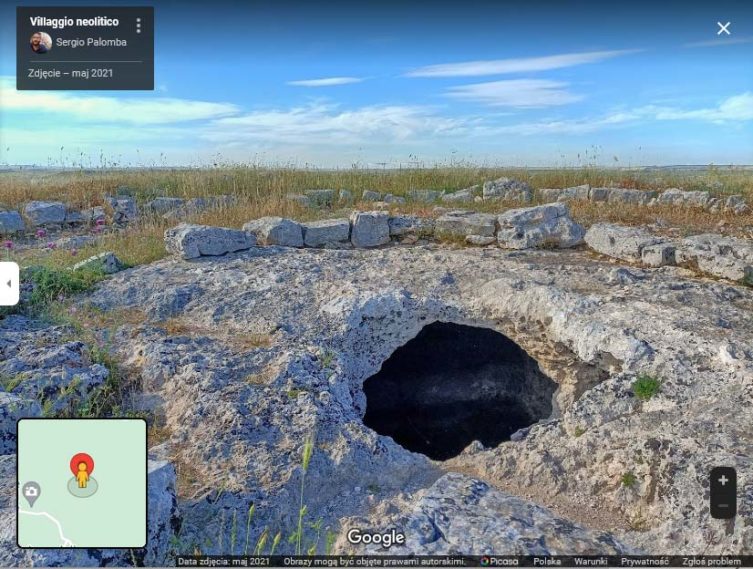
source: www.google.pl/maps
author of the photo: Sergio Palomba
18. Viewing point and starting point of the trails
This point is on the map because it is a very good viewpoint, next to which there is a car park (it is usually difficult to find a place and you have to check parking possibilities due to the restrictions of the Parking Zone), and by the way, it is the place where walking routes leading to the other side of the Gravina stream valley. If you feel like walking, just go to this point and from there start your trek towards the suspension bridge (point 12) to the other side of the stream or towards the Madonna degli Angeli church (point 16).
Parking, viewing point and starting point for hiking tours, GPS coordinates:
40°39’59.0″N 16°36’49.3″E
40.666385, 16.613687 - click and route
19. San Nicola dei Greci and Madonna delle Virtù sacred complex
If you do not have the strength to go to the other side of the Gravina creek, but you still want to see something really special, then this proposal will satisfy your appetite.
The rocky sacred complex consists of the Madonna delle Virtù church, the Madonna delle Virt klasz monastery, the church of San Nicola dei Greci and the cellar. All objects are carved entirely in the rock and connected with each other by narrow tunnels and steep stairs that will eventually lead you to the viewpoint. All parts of the complex were built around the same time, in the XNUMXth century AD. Some consider it the most outstanding example of the so-called "Negative architecture", consisting in the fact that buildings are created as a result of removing the construction material, not its overlay (such as when putting up walls).
Currently, the building is used for prestigious contemporary art exhibitions.
There are two car parks not far from the sacred complex, where parking is allowed in accordance with the rules of limited traffic (ZTL zone) in force in Sassi, but the number of places is so small that it is not worth even trying to take this solution into account.
San Nicola dei Greci and Madonna delle Virtù sacred complex, GPS coordinates:
40°40’02.7″N 16°36’45.1″E
40.667424, 16.612518 - click and route
Parking lots and parking in Materze
Parking lots are the weakest point of the program in Mateara. In the area of Sasso Caveoso and Sasso Barisano, parking is NOT possible both in high and low season. Even if you have an overnight stay in the old town of Matera, you do not have the right to park in this area.
So if you stay overnight in one of the hotels in the area of Sasso Caveoso or Sasso Barisano, you can of course drive to the vicinity of the hotel to unload your luggage, but then you have to immediately drop off the car somewhere outside the old town. I advise against trying to break this rule. A high fine is guaranteed.
The easiest way to park in Materze is in the Piano district, on the street. Pay attention to the color of the lines marking the parking spaces. White lines are free seats, blue lines are paid and yellow lines are reserved for someone other than tourists.
Below I am giving approximate GPS coordinates, where it should be the easiest to find street parking.
Parking on the street near Sasso Barisano (marked on the map as P1), GPS coordinates:
40°40’13.3″N 16°36’29.8″E
40.670353, 16.608276 - click and route
Parking on the street near the Sasso Caveoso (marked on the map as P2), GPS coordinates:
40°39’40.8″N 16°36’32.4″E
40.661327, 16.608989 - click and route
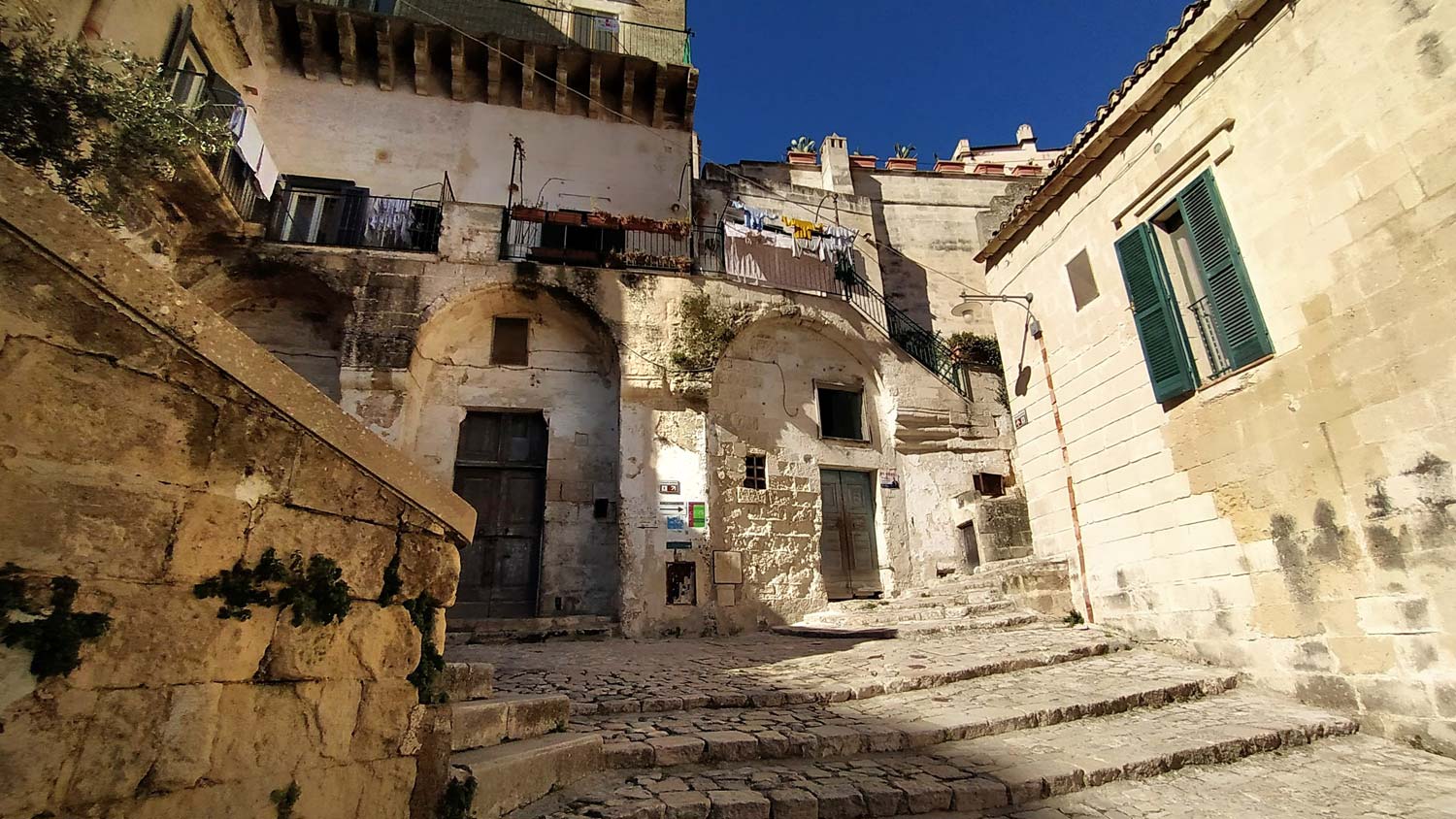
How to get to Matera?
I prefer traveling by car myself. I usually rent a car from a car rental company and pick it up on arrival. Matera was one of my points Puglia sightseeing plan (although Matera in Apulia does not really lie, because it lies within the borders of Basilicata). I picked up the car and returned it at the airport in Bari.
If you intend to rent a car in Italy, the best guide on this topic can be found in the entry Bari and Brindisi: car rental without credit card and deposit?. This post is the result of many experiences that I have gained by passing various mishaps many times ... but not this time! Don't make the same mistakes. Read on!
However, if you intend to travel by train, a website is available in Polish, thanks to which it is very simple you will find train connections in Italy and you can buy a ticket online - [click] at the same price as at the ticket office at the railway station.
Matera accommodations, hotels
Accommodation in Materze is not the cheapest, especially in Sassi. On the other hand, at dusk, when the lights come on one after the other, and the sky becomes darker and darker, deep blue, the scenery is indescribable. This transitional state between day and night is fascinating. First, the low-hanging sun illuminates the stone houses with its orange-red light, giving them a warm, almost fiery color. Immediately afterwards, house after house, minute by minute, the shadow cast by the surrounding hill appears on successive parts of the city, and the rickety household lamps, illuminating small courtyards, begin to light up like microscopic fireflies. Observing this process as the first points of light appear, and then their number continues to increase, thicken and look almost like a reflection of the starry sky on the ground is extremely pleasant. And that's why it's worth paying a little more for the room. If only to be able to observe this transformation of day into night from the Sassi level, from within Matera.
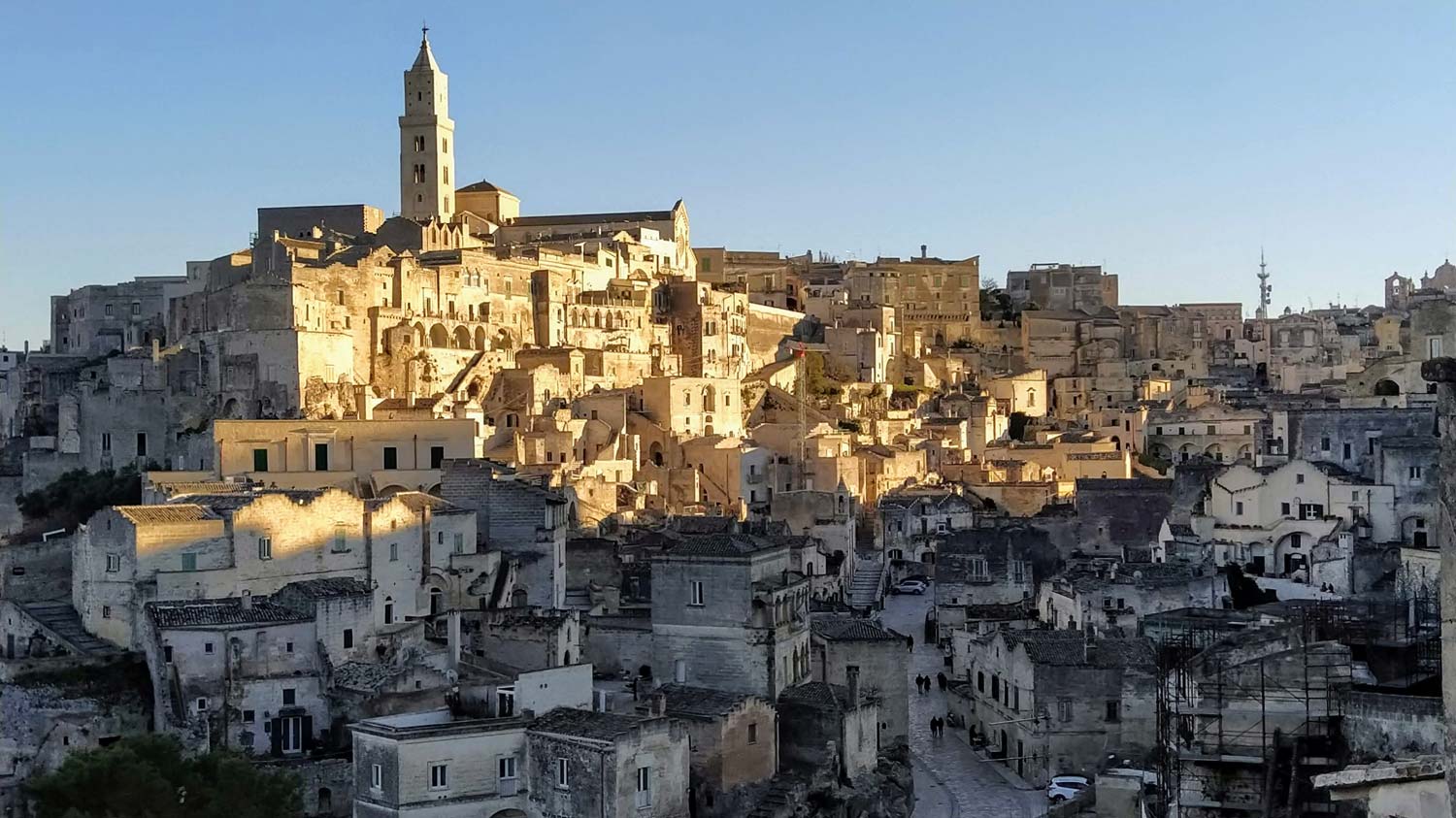
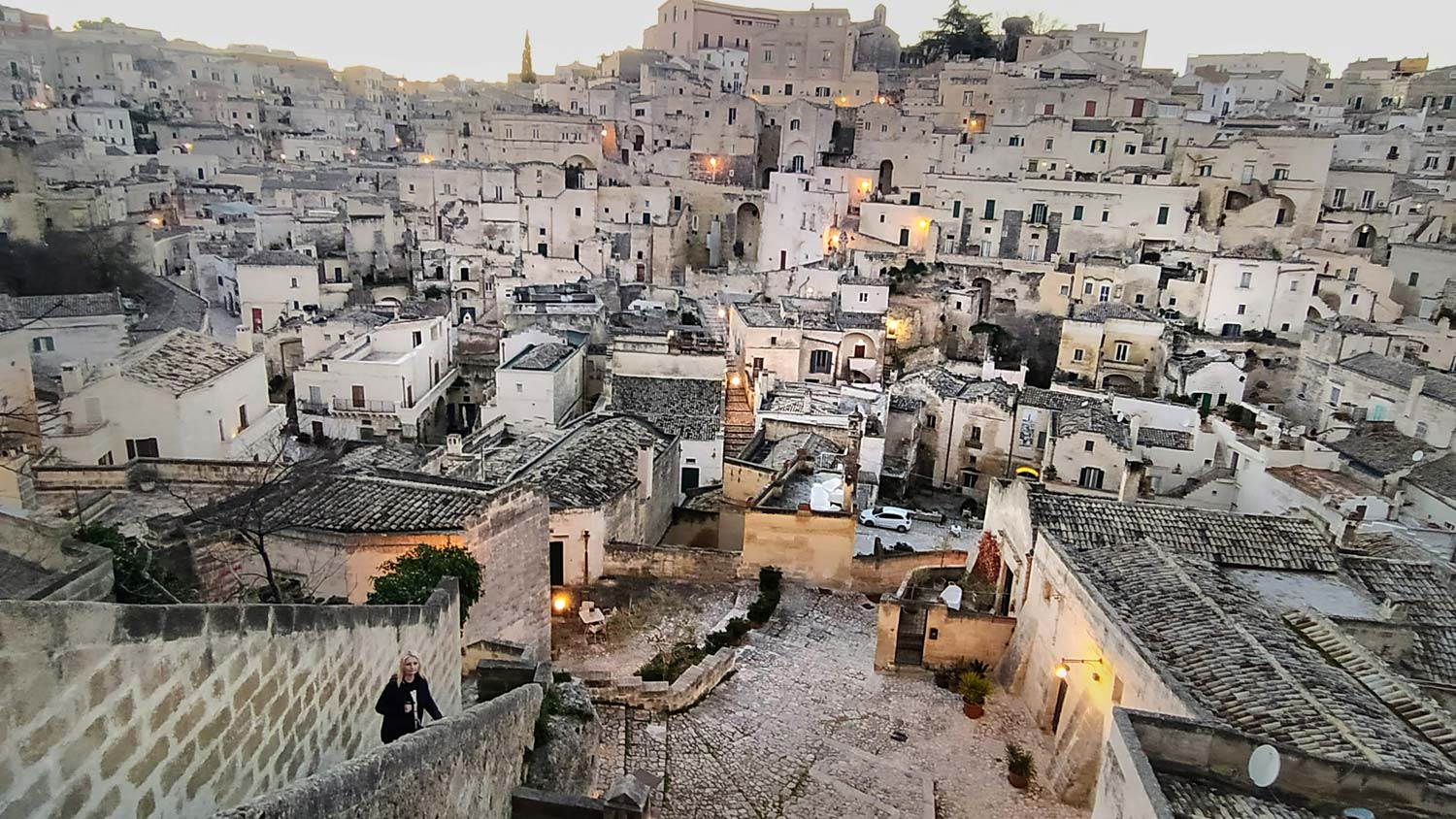
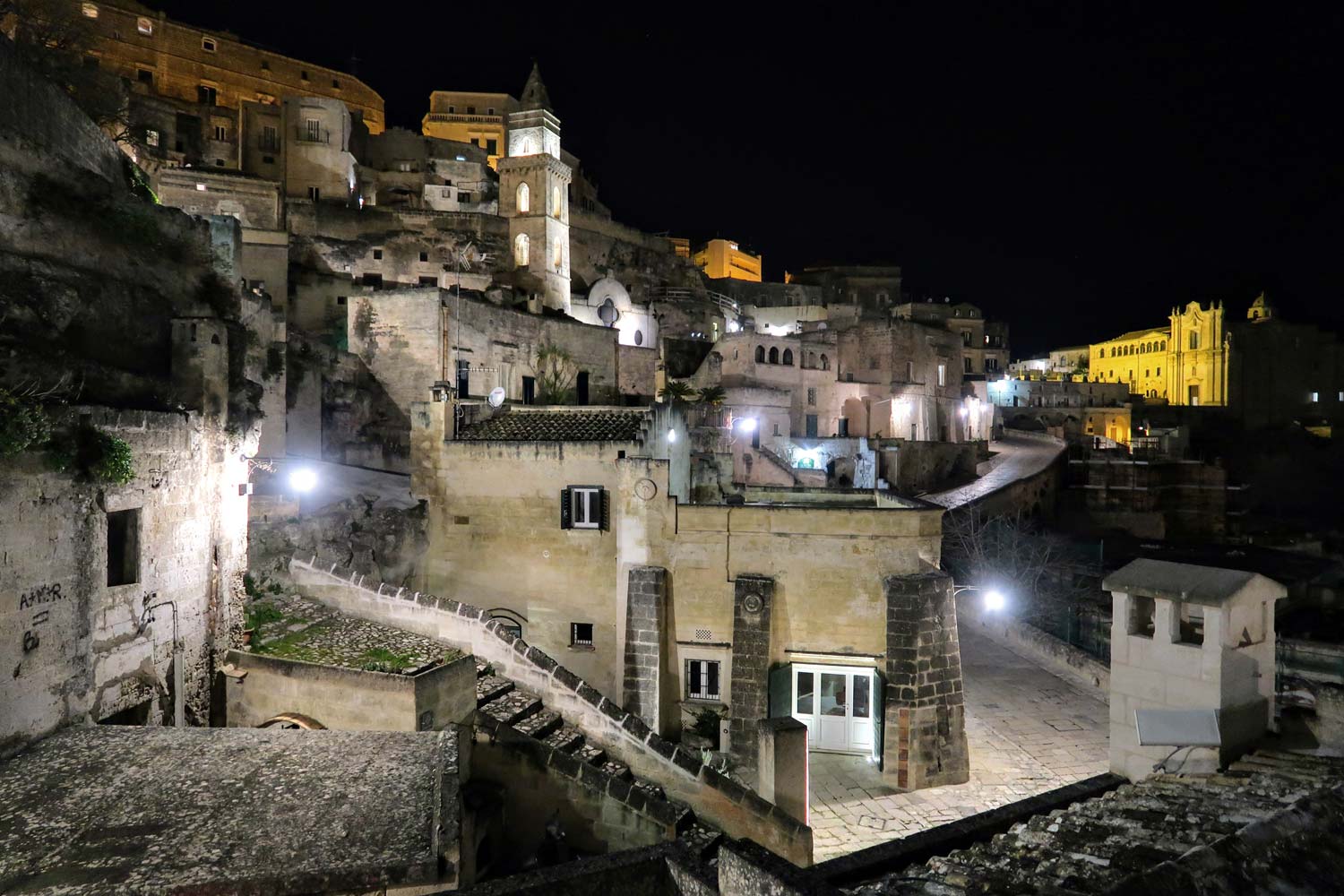
Fra I Sassi Residence - [click]
We did. We chose and booked a hotel in the heart of Sassi on Booking: Fra I Sassi - [click] (which literally means Among the Sassi). The hotel rooms are traditional, original caves and living quarters, renovated and refurbished in a rather avant-garde way. The original layout has been preserved and the whole room is one large, elongated cave room. The bathtub is therefore part of the room and is not separated from the rest of the room. Someone is lying in bed, and someone is lying next to it and is bathing in the tub. We talk freely 🙂
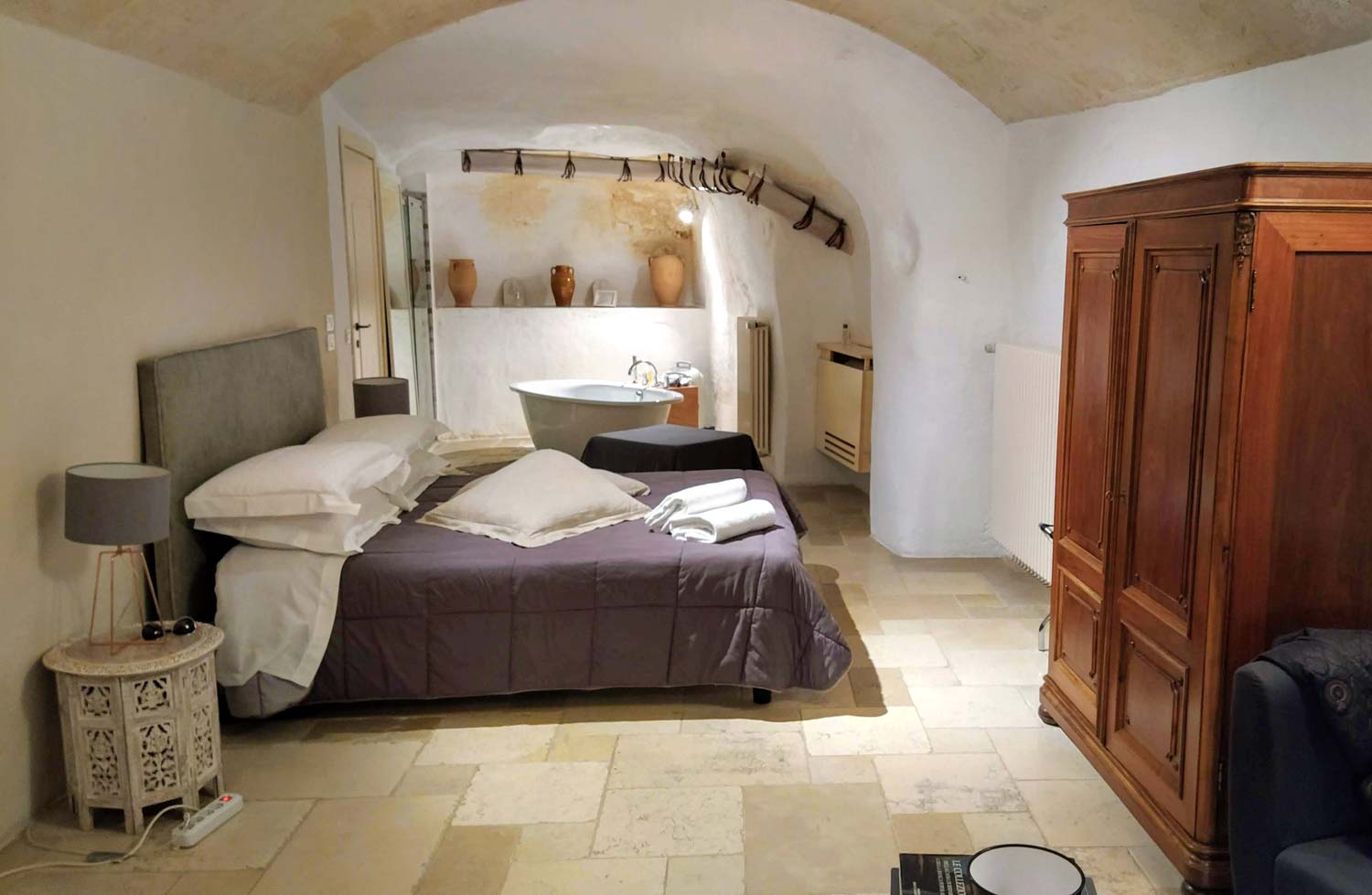
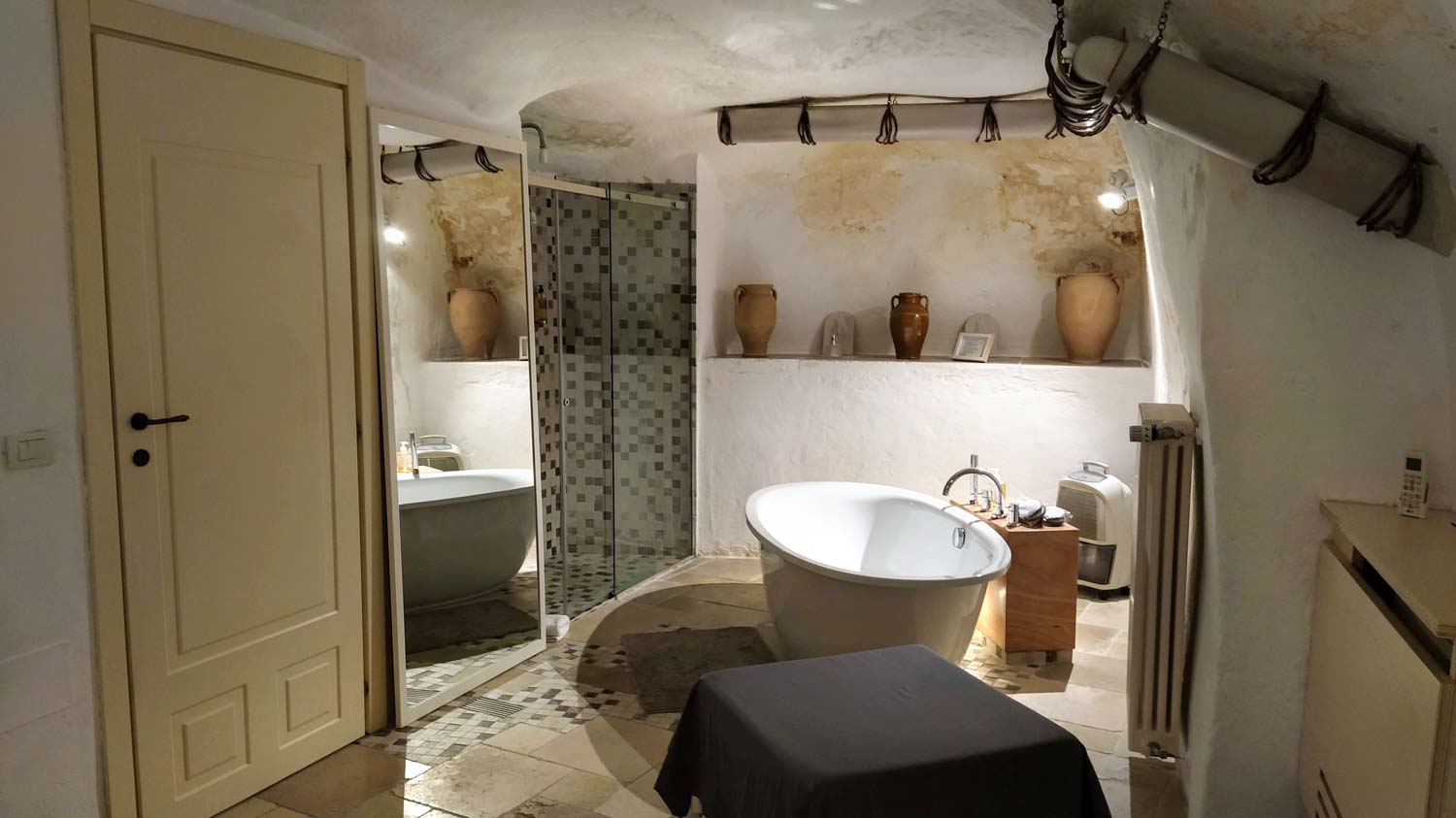
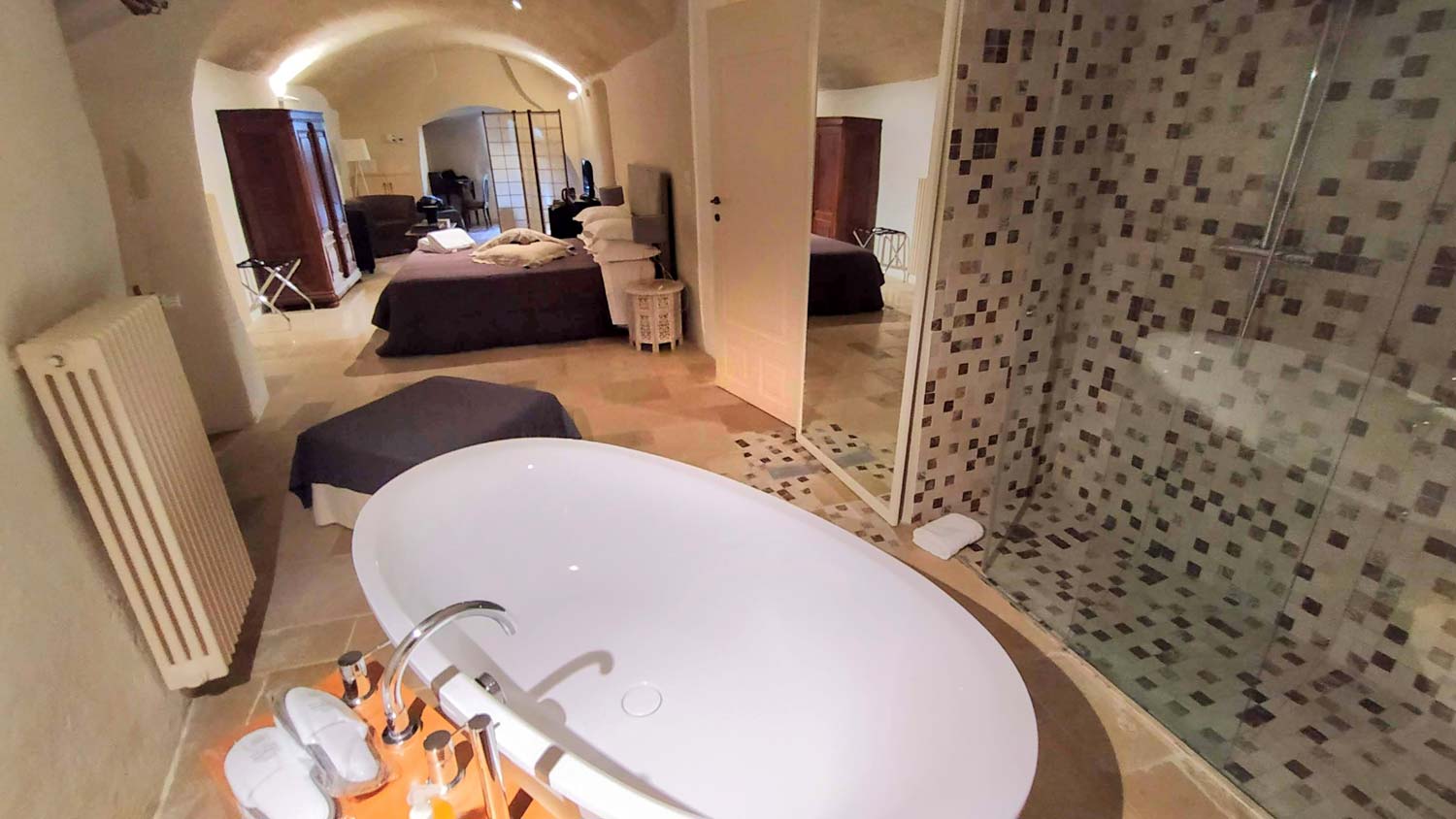
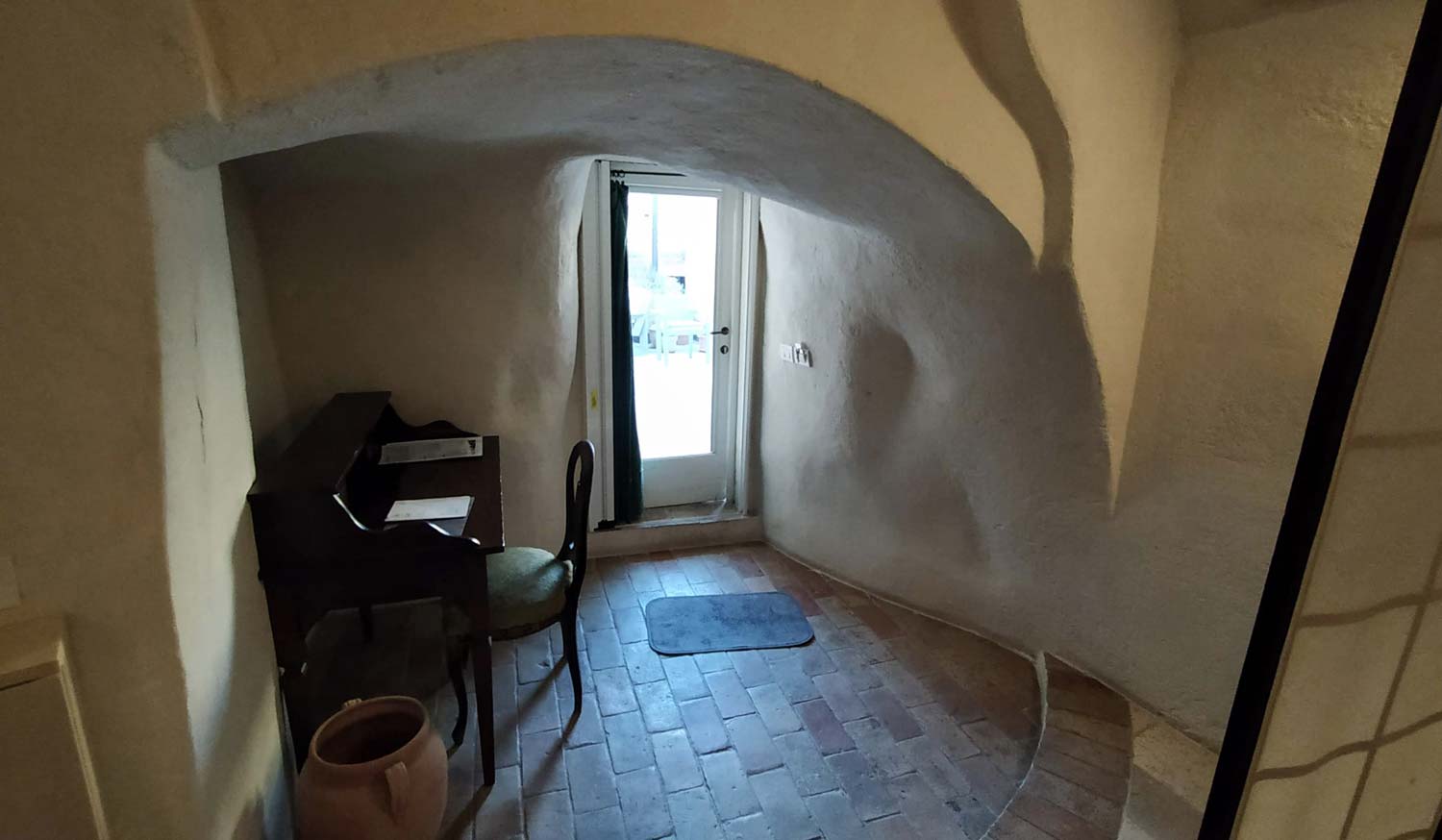
We could feel firsthand what it was like to live and do everything in one big room. A very nice experience that additionally introduces us deeper into the atmosphere of the city. The only exception is the toilet, for which a separate, small room has been created.
After all, I would rather not choose a family vacation with children 🙂
… But take it easy! Family rooms are also available and arranged according to your needs.
The location of the hotel Fra I Sassi it is perfect and the rooms have direct access to the terrace where you can go out at any time and enjoy the beauty of the city. It was perfect! We spent some time on the terrace in the evening, drinking wine and a bit in the morning, where we enjoyed breakfast and then basked in the sun (it was February), where the temperature was above 20 degrees Celsius. Lovely!
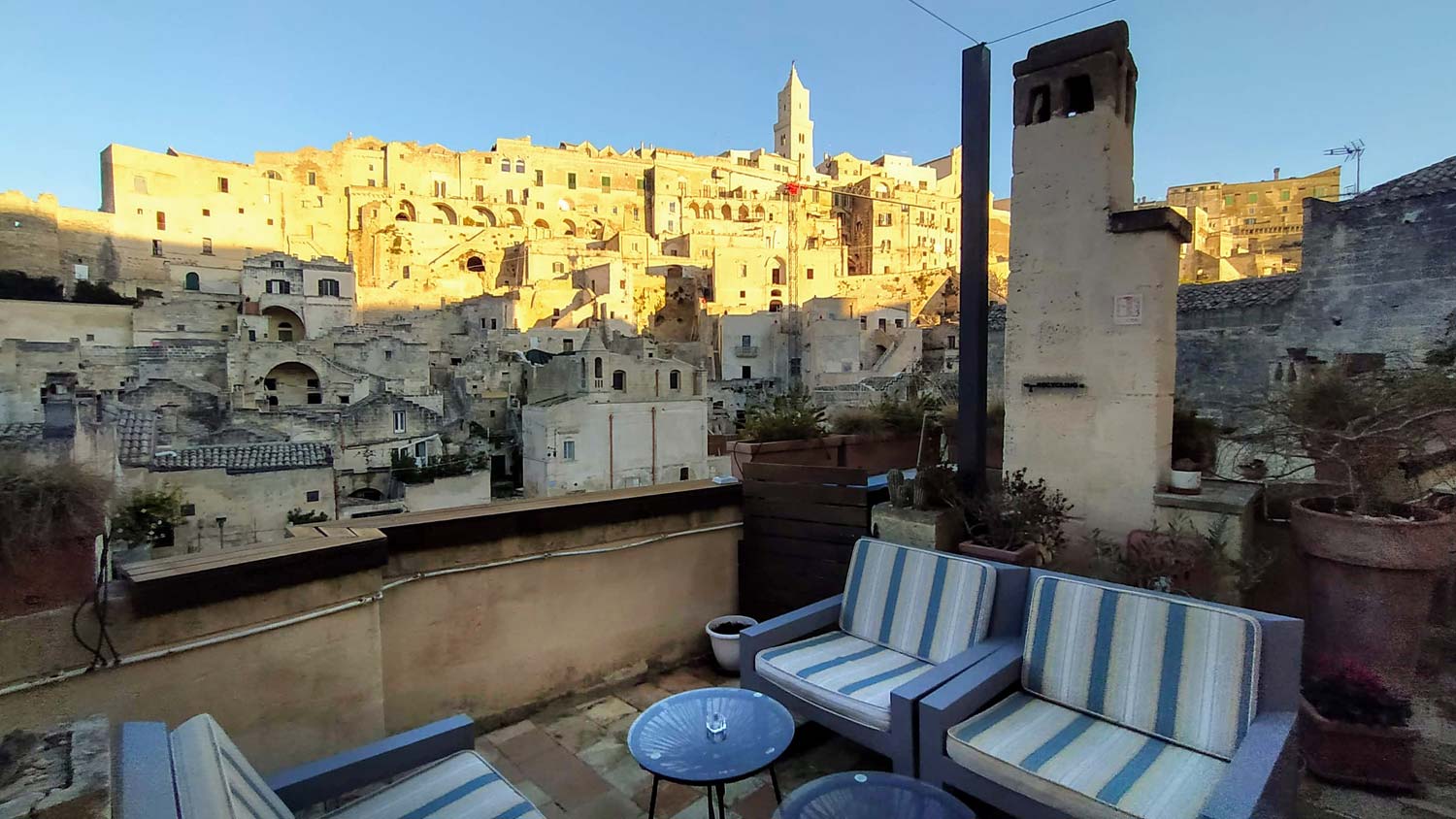
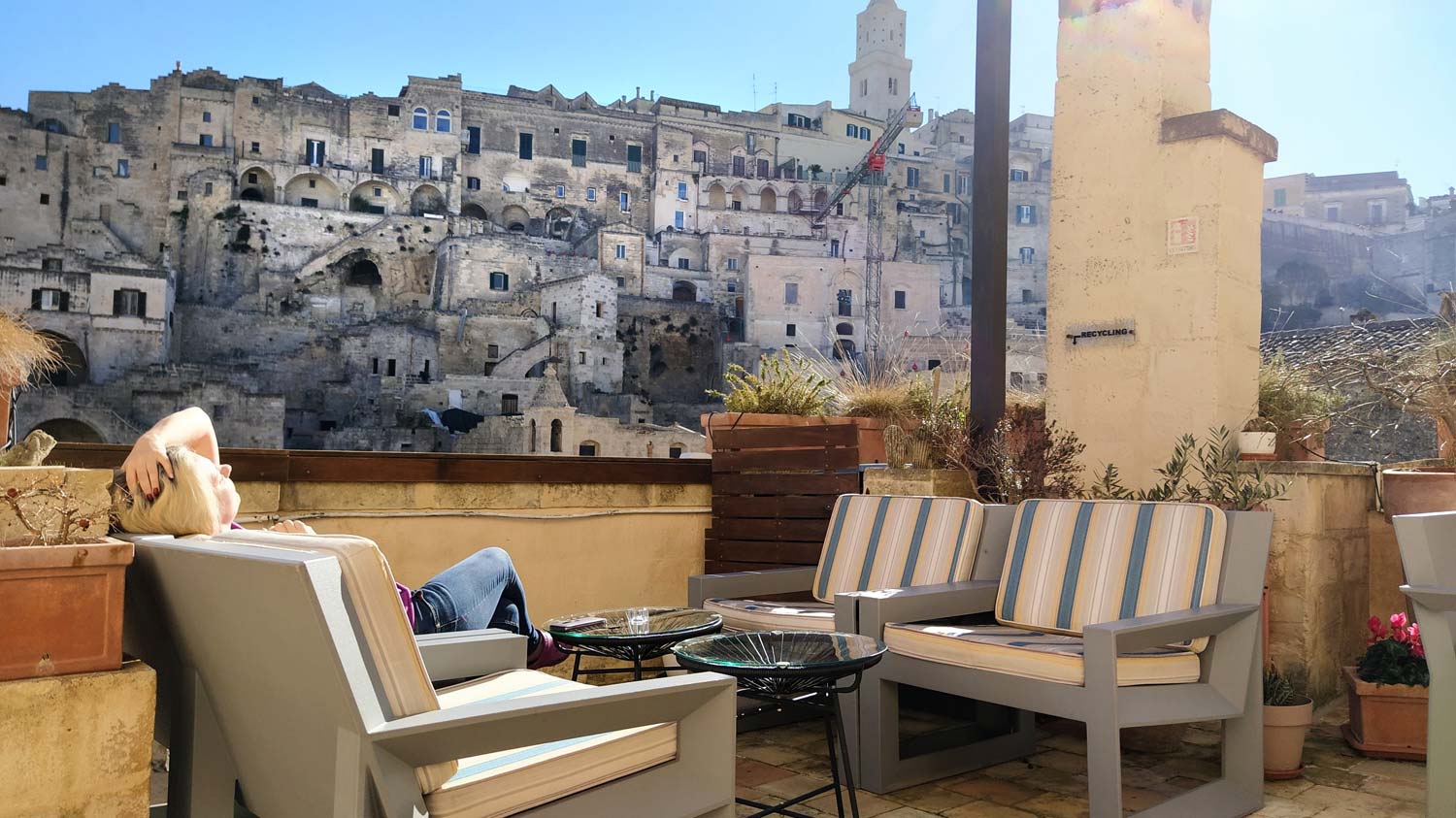
I really honestly recommend that you take the room rate a bit higher and taste Matera from the inside! Memories and photos will be unique.
Of course, in Matthew except Fra I Sassi there are many other fantastic and perfectly situated hotels. Below are some links that will make your search easier, as they limit your search results to places located in or in Sassi's immediate vicinity. It is best to start the search by clicking on one of these links, and then possibly further narrow the scope of the search.
Under the general link, you will additionally find a few specific proposals I have selected that may inspire you.
- check: Matera hotels and accommodation on Booking - [click]
La Dimora di Cesare Casa Vacanze - [click]
Matera restaurants, where to eat?
I struggled with my thoughts for a long time whether to point to specific places. Ultimately, I opted for a different solution. In Matera (as I mentioned before) we ate in several places with different price levels. From coin vending machines with sandwiches in a foil box, to fast street fast food with mini pizzas and other take-away treats, to high-quality restaurants. Everywhere we got was tasty, well done and worth the money. The restaurant with the highest bill (restaurant "Dedalo - Sensi sommersi”) She served food prepared according to restaurant standards from a different shelf. Even the dish whose name sounded ordinary on the plate looked like a work of art and tasted as good as it looked. As it turned out later in TripAdvisor, it is very highly rated by customers and is ranked 12th among 300 places in Mateara: check it out Reviews about “Dedalo” on TripAdvisor - [click].
In addition, it was entirely underground, in caves renovated with great taste and attention to detail. Below you can see some photos from inside the restaurant.
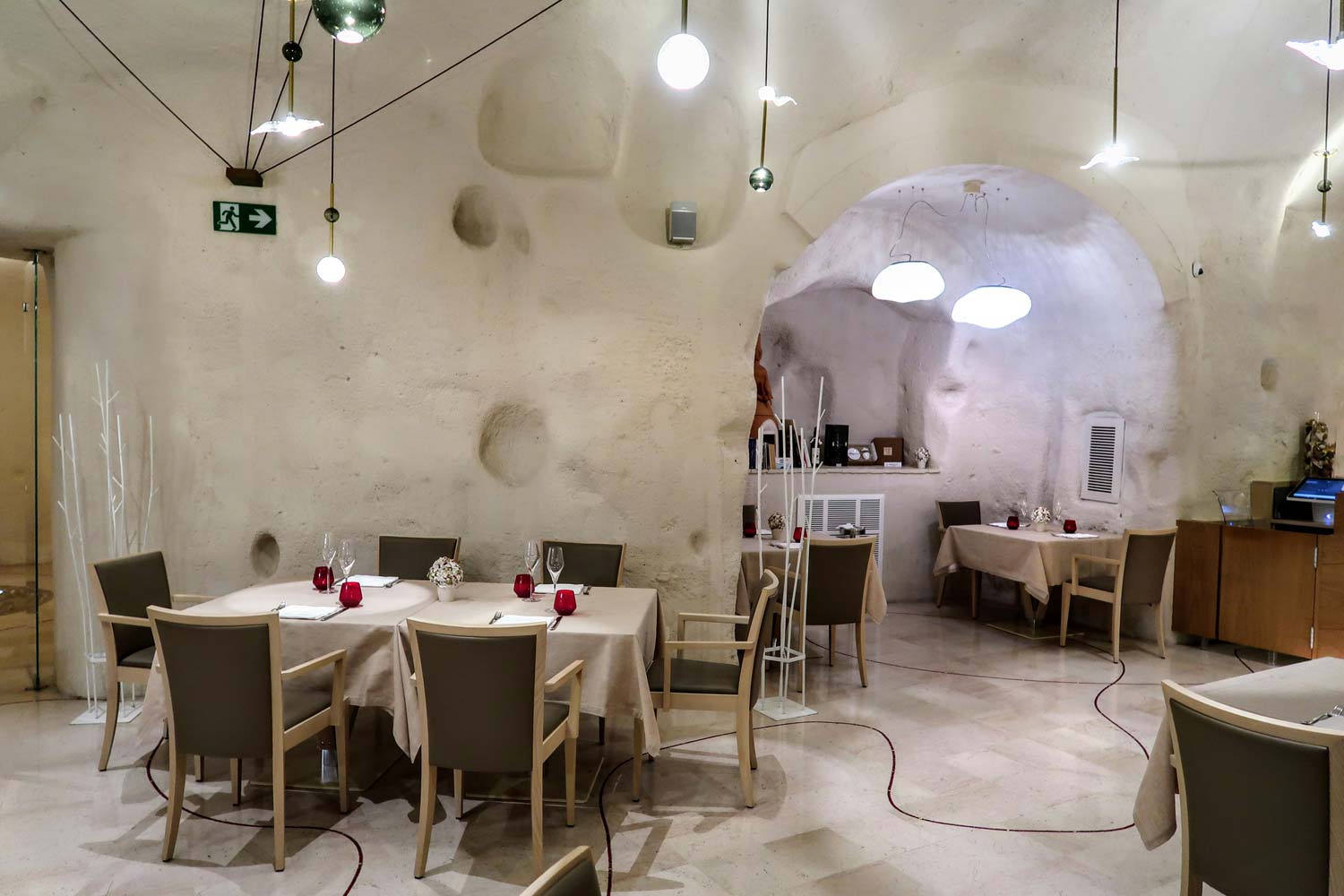
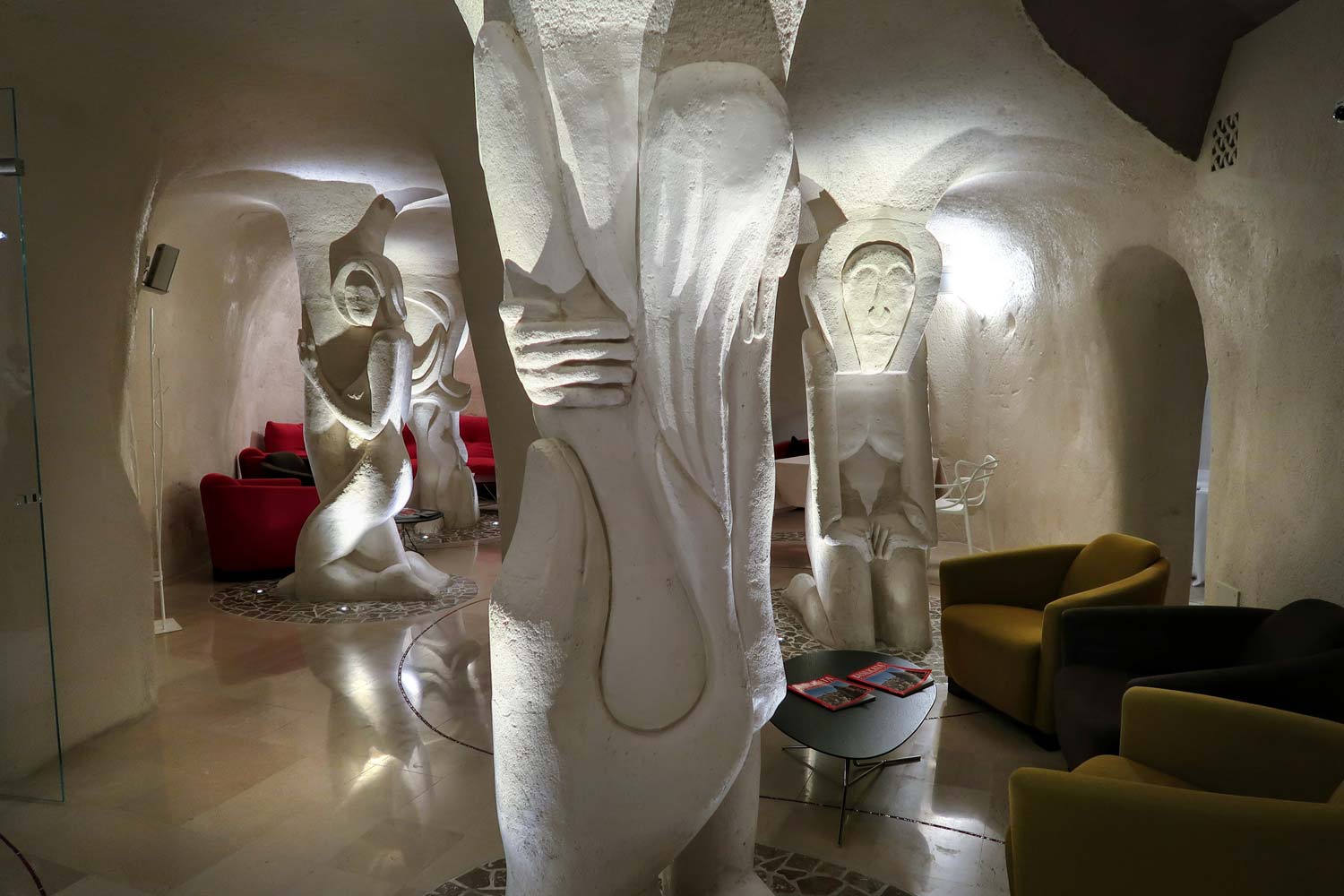
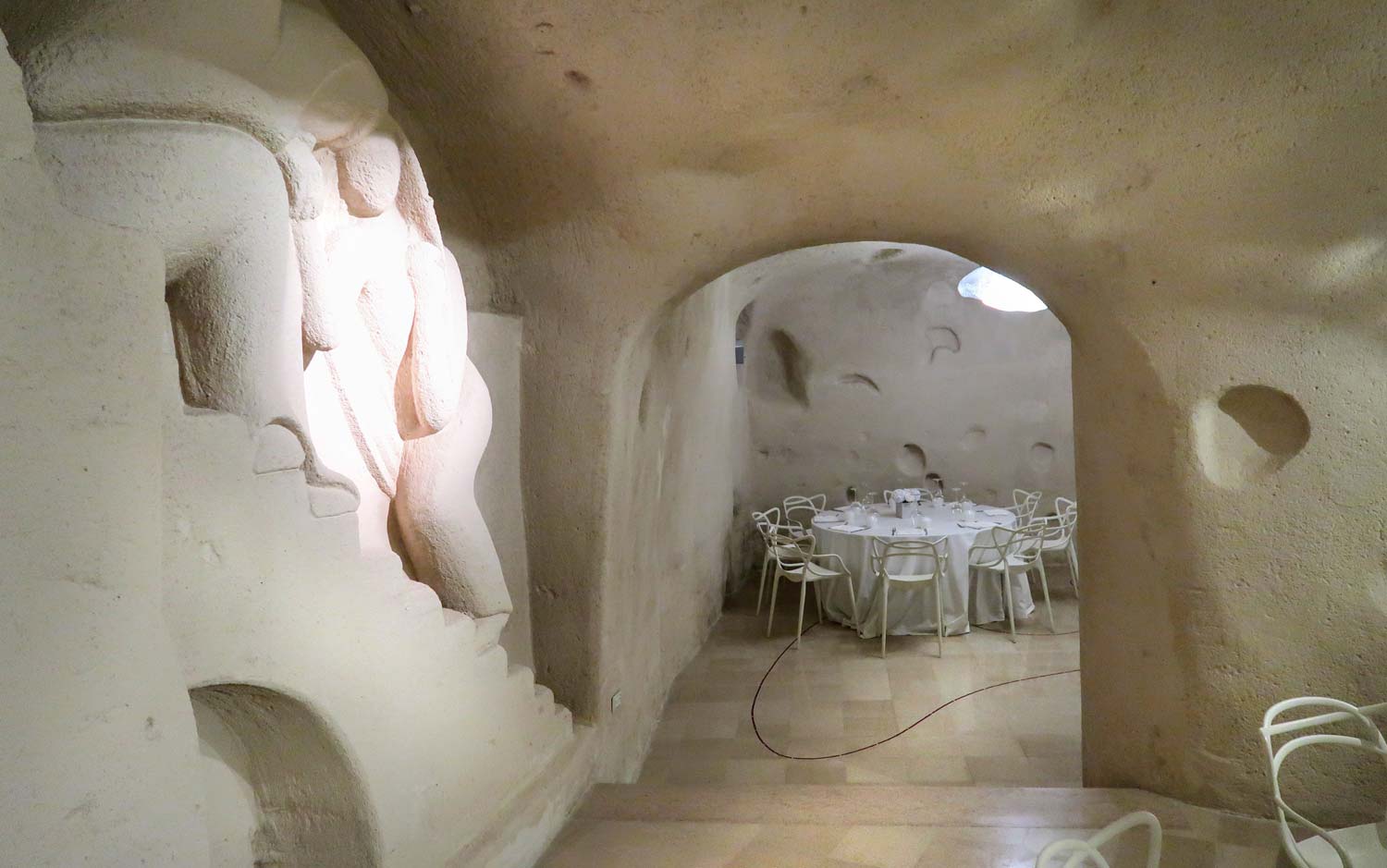
To sum up: I will not direct you to specific places. It is virtually certain that no matter where you walk in or where you sit, you will most likely eat just right. Just look for a place suitable for your pocket and enjoy the benefits of Italian cuisine!
For convenience, I am providing a link to restaurant ranking in Materze - {click]. The ranking takes into account different types of restaurants depending on your preferences and allows you to find the best restaurants in the area according to your criteria (price level, type of food, delivery, etc.).
You can also check it out quickly on TripAdvisor before you enter the restaurant you are interested in (you will learn about the opinions of others, the price level, see photos of the interior and photos of the dishes).
Important to me!
Give the article a good rating (5 stars welcome 😀)!It's free, a for me it is very important! The blog lives on visits and thus has a chance to develop. Please do it and ... thank you in advance!
If you like my guides, you will certainly find the one I created useful guide catalog - [click]. There you will find ready-made ideas for your next trips, descriptions of other tourist destinations and an alphabetical list of guides divided into countries, cities, islands and geographical regions.
I also post link to Facebook profile - [click]. Come in and press "Follow"then you will not miss new, inspiring posts.
Unless you prefer Instagram. I'm not a social media demon, but you can always count on something nice to look at on my instagram profile - [click]. The profile has just been created, so for now he is starving, due to the lack of followers. He is happy to receive any observer who feeds him with his love.
I make the content I create available free of charge with copyright, and the blog survives from advertising and affiliate cooperation. So, automatic ads will be displayed in the content of the articles, and some links are affiliate links. This has no effect on the final price of the service or product, but I may earn a commission for displaying ads or following certain links. I only recommend services and products that I find good and helpful. Since the beginning of the blog's existence, I have not published any sponsored article.
Some of the readers who found the information here very helpful, sometimes ask me how you can support the blog? I do not run fundraisers or support programs (type: patronite, zrzutka or "buy coffee"). The best way is to use links. It costs you nothing, and support for the blog is self-generating.
Pozdrawiam


Very interesting and helpful for exploring Matera. otherwise inspiring. I hope that the trip to Apulia not completed in 2020 will take place this year and we will visit Matera and not for one day. Best regards and thank you for the article that will help us explore this amazing city. Grażyna.
I keep my fingers crossed for the success of the trip! I wish you many great experiences!
We just live in one of the "caves". Thanks for the great guide! I see a plan for 3, not one visit, but this city is amazing and I am already planning to come back 😊
The "cave" climate does the job! A good choice!
We just returned with my family from a trip to Matera. A wonderful trip thanks to your guide in this wonderful city. We followed all your advice, from parking through the order of sightseeing, step by step. Links to google maps are great, great idea. Thanks to the Lord, we had a wonderful time. Thank you very much. I go to observation on insta.
Thank you! I'm so glad it works!
Very interesting article, perfect for visiting Matera, versatile and extremely helpful - I highly recommend and thank you, P. Jacek !!!
Cool!!!
: )
dziękuję
Very interesting description! We will return to Matera at dusk! Greetings Ela and Piotrek on the way back to Bari
A very useful article for exploring Matera. Links to google maps for each of the attractions do the job.
A very interesting article. Tomorrow I will verify its usefulness 🙂 Yours sincerely
Ooooo! Excellent!
When I came to Matera and saw Sassi through the Tre Archi viewpoint, my jaw literally dropped. Now I recommend everyone to go there :).
great article, so it helps to plan your Matera tour 😉 Thank you!
Estupendo recorrido por Matera. Muchisimas gracia por ayudarme a programar esta visita.
We just came back from Apulia. In materze, we spent 2 days in the Sasi district. What a pity that I just came across this wonderful guide. Thank you anyway. I will come back to Matera again. A handful of photo memories from Matera: https://www.facebook.com/jerzy.safijanski/posts/pfbid0qP4yhhzeZ1F2G5ARtnbFepe3aRSzA63wWYm1wEWw2HQfLV1dSjTatFhW2wfXzDwwl?notif_id=1664704913946159¬if_t=feedback_reaction_generic&ref=notif
Mr. Jack, great respect for such a fantastic guide. We are after visiting Bari, Ostuni, Lecce, Polignano, Aberobello and Monopoli by car. Many thanks for pointing out the parking spaces and for the great tips! Everything came in handy and saved me time.
Tomorrow it's time for Matere (guide read!) and here I have a question. Will you reveal from which place the photo was taken under the part of the article "National disgrace" signed "Matera - Sassi (year 2020)"?
I had to think for a moment. I took the photo somewhere between points 10 and 11 on the map.
Incredibly accurate and helpful description!
Perfect! Wir waren 3 Tage in Matera heuer im Oktober. Relativ ohne viel Planung nach der Methode "Matera musst du dir durch viele zu Fuß Kilometer erarbeiten". Mit der Zeit setzt sich diese wunderbare City zu einem sehr komplexen Gesamten zusammen.
Wieder zu Hause – reflektiere ich unsere Sizilien u. Wir werden wiederkommen und dann Matera und Umgebung viel bewusster erleben können und ganz bewusst viel Fehlendes vertiefen können!
Ausserdem denke ich, dass ihr Blog uns bei anderen Reisen sicher sehr hilfreich sein wird, weil sie viele Details veröffentlichen, die in keinem Reiseführer stehen.
Ein Tipp in eigener Sache und für den Austausch: Staunend Reisen auf https://findpenguins.com/ – the Reiseblog meiner Frau
Really great guides. Thanks so much. I love your maps with highlights marked on them. These are great starting points for our trip.
I'm very appreciative.
Robert
IG robert_416 my trip starts May 16, 3023 and I'll be posting photos.
Thank you and have a nice trip!
Hola, estupenda guía de Matera, gracias mil. Estaré por alli a fines de octubre. No me queda claro donde estacionar el auto, pensando en el hotel. Tu paraste en el Frai Sassi. Donde dejabas el auto?
Gracias! Saludos, David